Bahrain is a small island nation in the Persian Gulf known for its unique bird population. The country boasts a diverse range of species, from desert birds to sea birds, as well as a wide range of migratory birds from Europe and Africa.
Bahrain is home to some of the world’s most beautiful and unusual birds, many of which are endemic to the region. Whether you are an avid birder, a novice, or just someone who loves to appreciate nature, Bahrain’s birds are sure to delight.
From the pink flamingos of Hawar Island to the majestic ospreys of Tubli Bay, Bahrain’s birds provide a wonderful opportunity to experience the beauty of nature.
1. Shrike
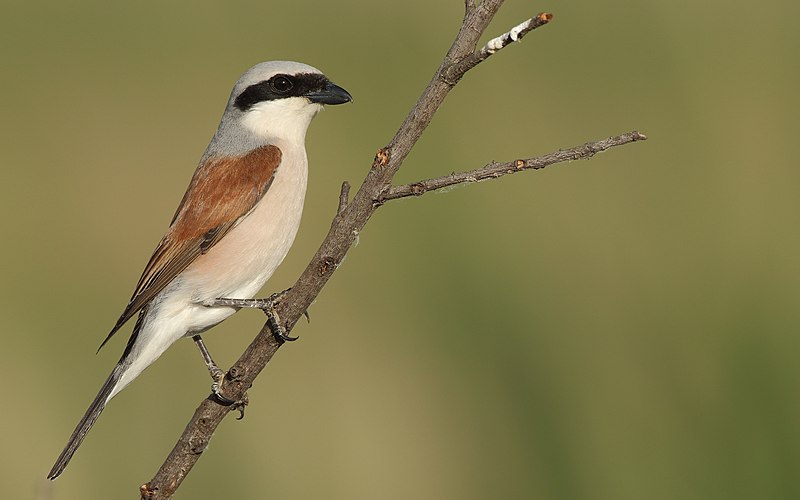
Shrikes are small passerine birds of the family Laniidae, with 34 species in four genera. They get their name from Old English word “scrīc”, which refers to their shriek-like call.
These birds have earned the nickname ‘butcherbirds’ due to their feeding habits; they impale prey on thorns or barbed wire fences for later consumption.
Shrikes also tend to be aggressive predators and hunt a wide range of animals such as insects, small reptiles, rodents and even other smaller bird species.
In terms of physical appearance, these songbirds can vary greatly depending on the specific genus but usually boast a large hooked bill atop an impressive crest along with bright colors like gray, black or brownish hues across its feathers.
It’s clear shrike is quite remarkable creature that has gained notoriety for both hunting prowess and distinctive vocalizations.Scientific classification:
| Kingdom | Animalia |
| Phylum | Chordata |
| Class | Aves |
| Order | Passeriformes |
| Superfamily | Corvoidea |
| Family | Laniidae Rafinesque, 1815 |
2. Larks
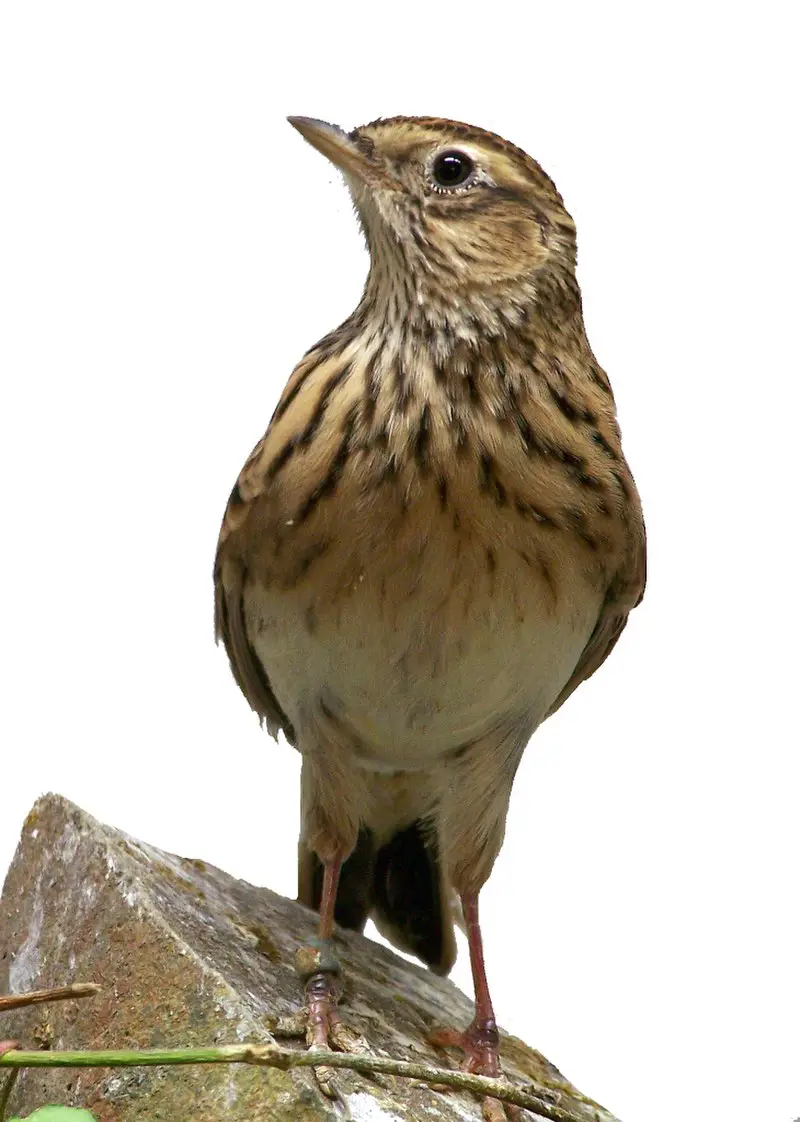
Larks are small passerine birds that belong to the Alaudidae family. These birds have a cosmopolitan distribution and can be found in many different habitats, including dry regions.
The largest number of lark species is located in Africa, while only one species (horned lark) inhabits North America and another one (Horsfield’s bush lark) lives in Australia.
These beautiful creatures usually appear during dawn or dusk as they sing their melodious songs high up into the sky.
Larks possess impressive flying skills which make them capable of reaching heights far above most other bird species.
Despite this skill, they prefer living close to the ground where there are plenty of seeds and insects for them to feed on.Scientific classification:
| Kingdom | Animalia |
| Phylum | Chordata |
| Class | Aves |
| Order | Passeriformes |
| Superfamily | Sylvioidea |
| Family | Alaudidae Vigors, 1825 |
3. Crab-Plover
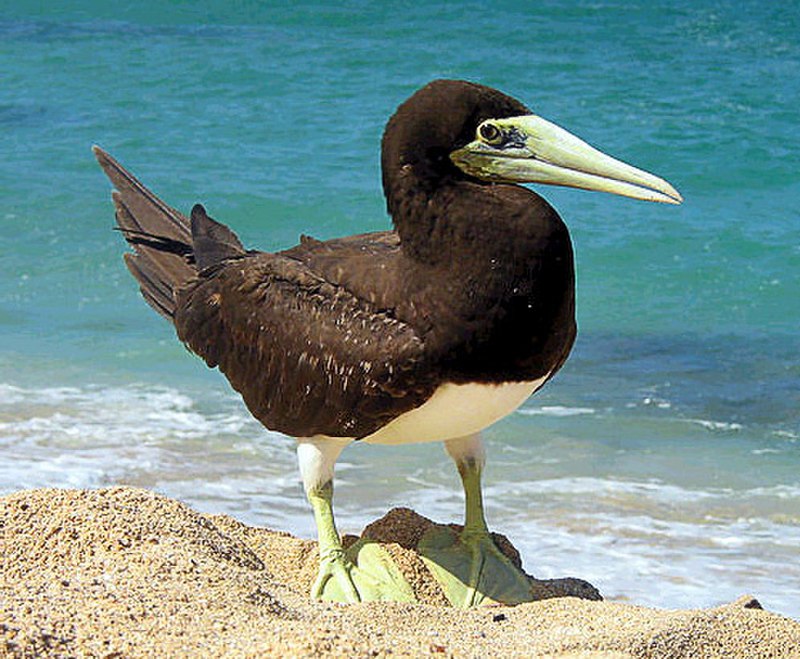
The crab-plover is an exceptional bird which belongs to its own family, Dromadidae. It appears to be closely related to the waders and other Charadriiformes such as auks, gulls and thick-knees.
This species of bird has a unique look; it is white with black markings on its head and wings. Its long bill helps them dig for food in sand or mudflats.
They can also fly up into the air when disturbed by predators or people too close for comfort.
The crab plover spends most of its life near beaches where they feed on crabs, fish eggs and small insects found there.
These birds are highly social during breeding season but solitary at other times throughout their annual cycle making them difficult creatures to spot out in the wild but well worth trying.Scientific classification:
| Kingdom | Animalia |
| Phylum | Chordata |
| Class | Aves |
| Order | Charadriiformes |
| Suborder | Lari |
| Family | Dromadidae GR Gray, 1840 |
| Genus | Dromas Paykull, 1805 |
| Species | D. ardeola |
4. White-Eared Bulbul
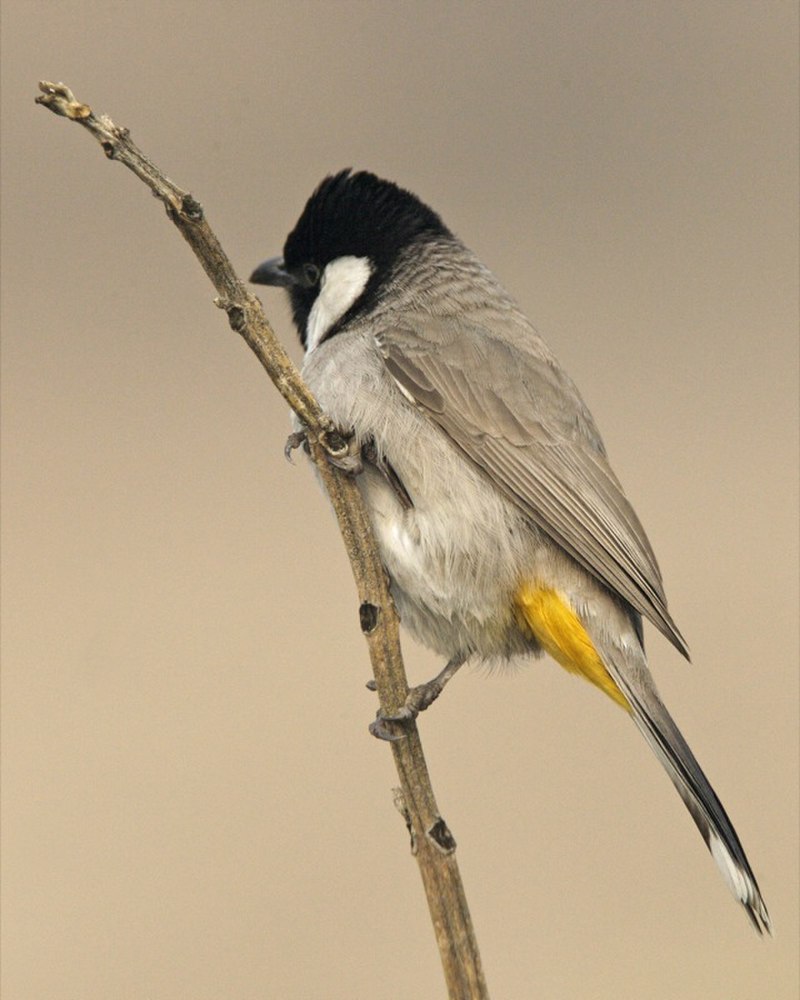
The white-eared bulbul is a member of the Pycnonotus genus and belongs to the Bulbul family. It inhabits south-western Asia from India to Arabia, where it can be seen in open woodlands or even gardens.
This species has long been recognized as one of six similar bulbuls that make up a superspecies, including Himalayan bulbul, White-spectacled bulbul, African Red-eyed Bulbuls and Cape Bulbuls.
The bird is brownish gray with reddish tints on its back and wings while its head is greyish with yellow eyes surrounded by a thin white eye ring which gives this species its name .
They feed mainly on fruits but also take insects like ants , grasshoppers , beetles etc . Their diet includes berries , seeds and flowers too.
In addition they are known for their loud vocalizations when alarmed making them an easily identifiable companion in any outdoor setting.Scientific classification:
| Kingdom | Animalia |
| Phylum | Chordata |
| Class | Aves |
| Order | Passeriformes |
| Family | Pycnonotidae |
| Genus | Pycnonotus |
| Species | P. leucotis |
Also Featured In: Birds That Live in Iraq, Birds that Live in Rajasthan
5. Bulbul
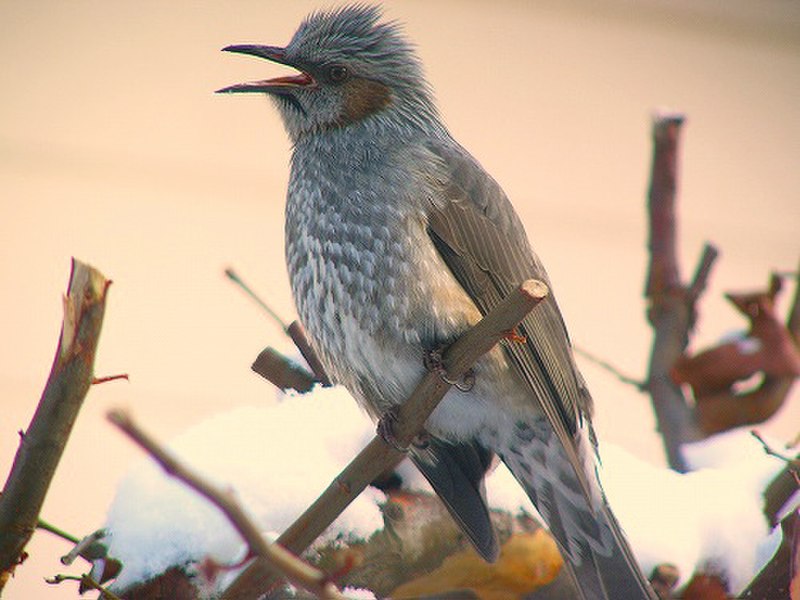
Bulbuls are a medium-sized passerine songbird family native to Africa, the Middle East and tropical Asia up until Japan. They can also be found on some of the Indian Ocean islands.
There are 160 species within 32 genera in this family which includes greenbuls, brownbuls, leafloves and bristlebills.
Bulbul birds have been known for their beautiful singing voices as well as for being very active during mating season when they gather together to create large flocks where potential mates can show off their skills.
The coloration of bulbuls range from dull greys or browns to vibrant yellows with black markings around the head region making them quite attractive creatures indeed.Scientific classification:
| Kingdom | Animalia |
| Phylum | Chordata |
| Class | Aves |
| Order | Passeriformes |
| Parvorder | Sylviida |
| Family | Pycnonotidae Gray, GR, 1840 |
6. Socotra Cormorant
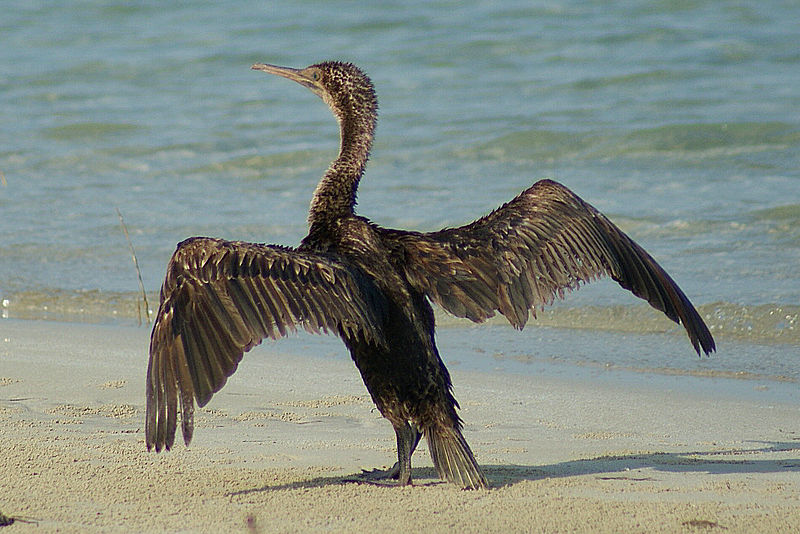
The Socotra cormorant is a threatened species of bird endemic to the Persian Gulf and south-east coast of the Arabian Peninsula. It has also been sighted in the Red Sea, although it is not known to breed there.
The bird has grey feathers with white patches on its wings, neck and tail tip. Its beak and throat are black while its face and legs are yellowish-white.
Despite being named for Socotra Island (Yemen), where it used to live before becoming endangered due to hunting, nesting destruction by humans and predation by feral cats; it was only confirmed in 2005 that this species breeds here again today.Scientific classification:
| Kingdom | Animalia |
| Phylum | Chordata |
| Class | Aves |
| Order | Suliformes |
| Family | Phalacrocoracidae |
| Genus | Phalacrocorax |
| Species | P. nigrogularis |
7. Motacillidae
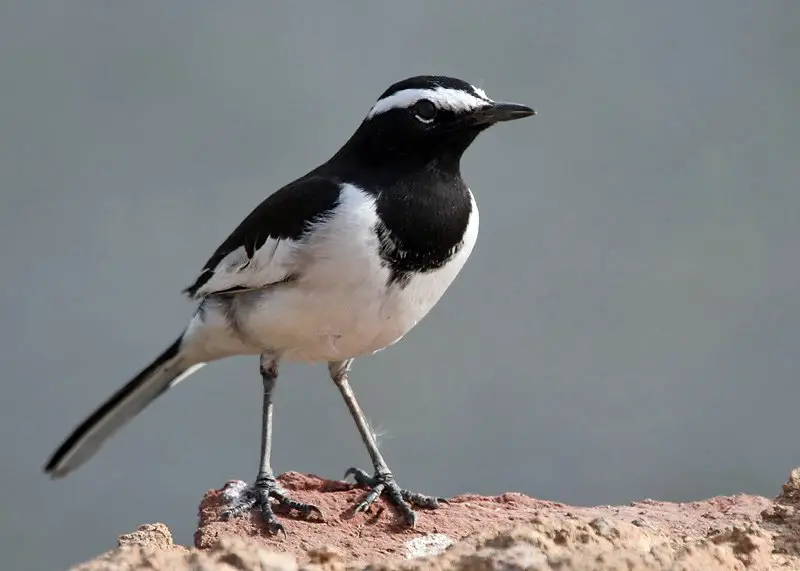
Motacillidae is a family of small passerine birds consisting of around 70 species. They are found across Europe, Africa, Asia and even Alaska with two migratory breeding species.
The three genera they belong to include wagtails which typically have medium to long tails; longclaws that can only be spotted in the Afrotropics; and pipits which possess the most cosmopolitan distribution worldwide.
These birds feed on insects as well as seeds for their diets and are usually seen in open habitats such grasslands or wetlands where food sources like invertebrates can easily be accessed.
Most Motacillidae species also use mud nests during breeding season making them easy targets for predators so it’s important we protect these beautiful creatures.Scientific classification:
| Kingdom | Animalia |
| Phylum | Chordata |
| Class | Aves |
| Order | Passeriformes |
| Superfamily | Passeroidea |
| Family | Motacillidae Horsfield, 1821 |
8. Crested Lark
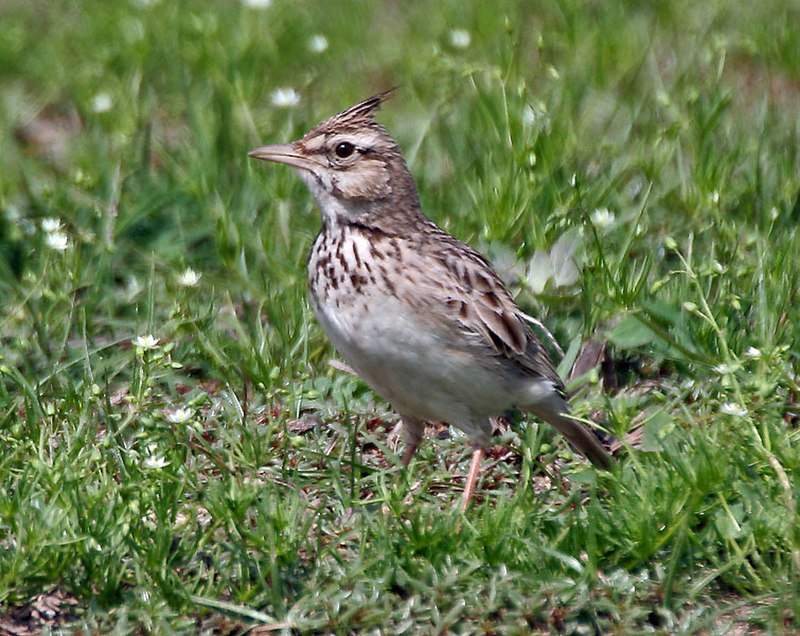
The Crested Lark is a species of lark that can be found across Eurasia and northern Africa. This non-migratory bird rarely appears as a vagrant in Great Britain.
It was originally described by Carl Linnaeus in 1758 for his 10th edition of Systema Naturae, under the genus Alauda until German naturalist Friedr Merrem moved it to its own genus Galerida in 1804.
The Crested Lark has an overall sandy color with darker brown wings and back, white underside, dark tail feathers and blackish bill.
Its most distinguishing feature are the two tufts on either side of its head which gives this species its name.Scientific classification:
| Kingdom | Animalia |
| Phylum | Chordata |
| Class | Aves |
| Order | Passeriformes |
| Family | Alaudidae |
| Genus | Galerida |
| Species | G. cristata |
9. Eurasian Reed Warbler
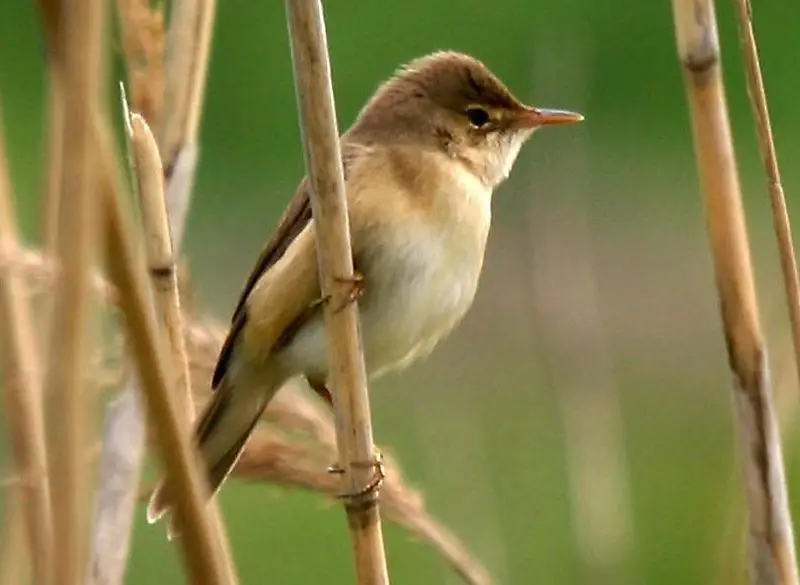
The Eurasian reed warbler (Acrocephalus scirpaceus) is a species of Old World Warbler native to the temperate parts of Europe and Asia.
It breeds in wetlands such as marshes, ponds and rivers with dense vegetation like reeds or tall grasses.
During its wintering season, it migrates southward to sub-Saharan Africa where there are milder conditions.
This small bird has streaked brown plumage on the upperparts and white underparts which makes it difficult for predators to spot among the foliage.
Its diet consists mainly of insects including aphids, caterpillars larvae and moths caught while flying over water or by gleaning from plants growing near water bodies.
The male sings an attractive song consisting of several phrases repeated one after another as part of their courtship display during breeding season in order attract females for mating purposes.Scientific classification:
| Kingdom | Animalia |
| Phylum | Chordata |
| Class | Aves |
| Order | Passeriformes |
| Family | Acrocephalidae |
| Genus | Acrocephalus |
| Species | A. scirpaceus |
10. Bustard
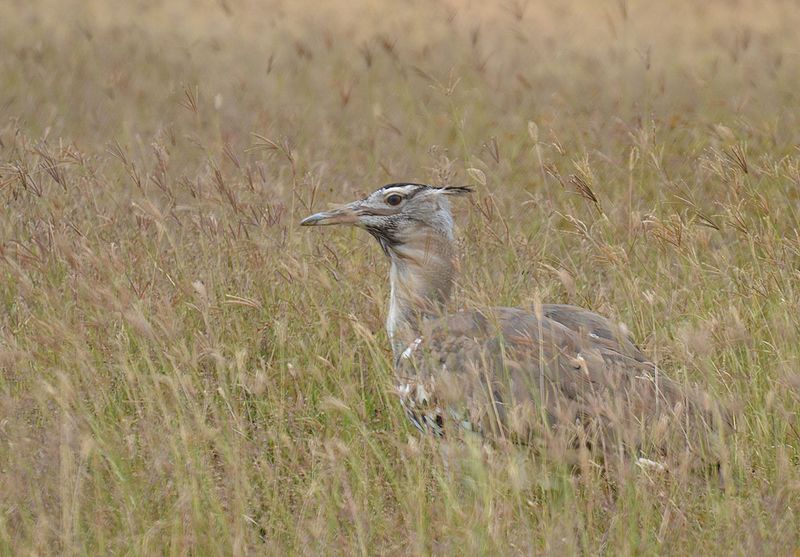
Bustards are large, terrestrial birds that inhabit dry grassland areas and the steppes of the Old World. They range from 40-150 cm in length and belong to the family Otididae.
Bustards have an omnivorous diet consisting of leaves, buds, seeds, fruit as well as small vertebrates and invertebrates.
These birds usually live a solitary life but can be seen gathering around water sources or food during certain times of year such as mating season.
Due to their large size they are vulnerable to predation by foxes or other animals which is why they tend to remain alert at all times.
When in open spaces while relying on camouflage for protection against predators when out in tall vegetation coverings.Scientific classification:
| Kingdom | Animalia |
| Phylum | Chordata |
| Class | Aves |
| Clade | Otidimorphae |
| Order | Otidiformes Wagler, 1830 |
| Family | Otididae Rafinesque, 1815 |
11. Skuas
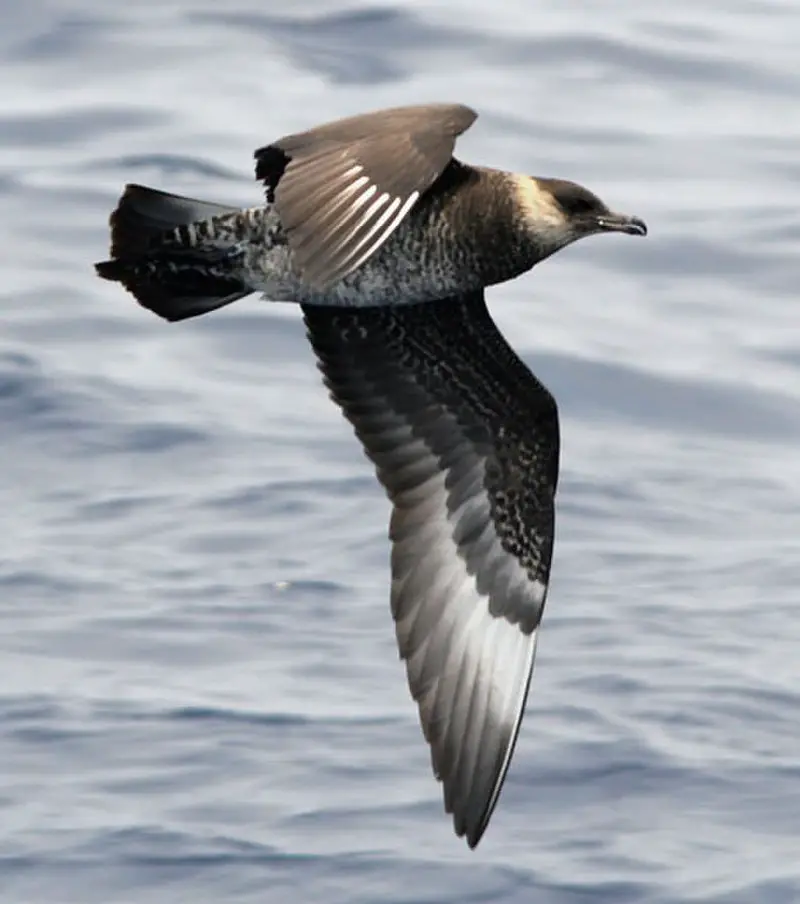
Skuas are a group of predatory seabirds with seven species, all belonging to the genus Stercorarius.
They are also known as “Jaegers” in North America and their name originates from the Faroese word for Great Skua – skúgvur.
These birds typically inhabit coastal areas or open oceans where they feed on fish, krill and other marine creatures.
Skuas can be distinguished by their pointed wings which help them fly long distances while hunting food.
Their distinctive colouration varies depending on age and habitat but generally includes greyish brown upperparts and white underparts with black streaks along its belly area.
The overall size ranges from 24-40 cm making these one of the larger sea bird species.Scientific classification:
| Kingdom | Animalia |
| Phylum | Chordata |
| Class | Aves |
| Order | Charadriiformes |
| Suborder | Lari |
| Family | Stercorariidae Gray, 1871 |
| Genus | Stercorarius Brisson, 1760 |
12. Little Stint
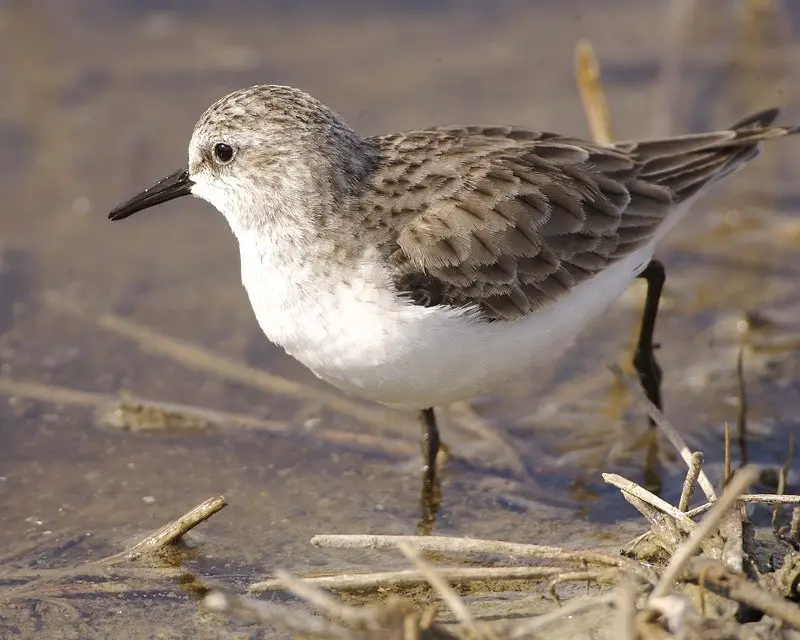
The Little Stint is an incredibly small wader that can be found in arctic Europe and Asia. During the winter it migrates to Africa and South Asia, but on rare occasions has been known to travel as far as North America and Australia.
The genus name comes from a term used by Aristotle for grey-coloured waterside birds. It’s scientific name “minuta” reflects its minuscule size when compared with other species of bird within this family.
Its feathers are mainly brownish-grey along the neck, chest and back while its belly features white streaks made up of black markings running along them horizontally.
Aside from its size, one of the most impressive traits about these birds is their ability to migrate such long distances every year.Scientific classification:
| Kingdom | Animalia |
| Phylum | Chordata |
| Class | Aves |
| Order | Charadriiformes |
| Family | Scolopacidae |
| Genus | Calidris |
| Species | C. minuta |
13. Old World Orioles
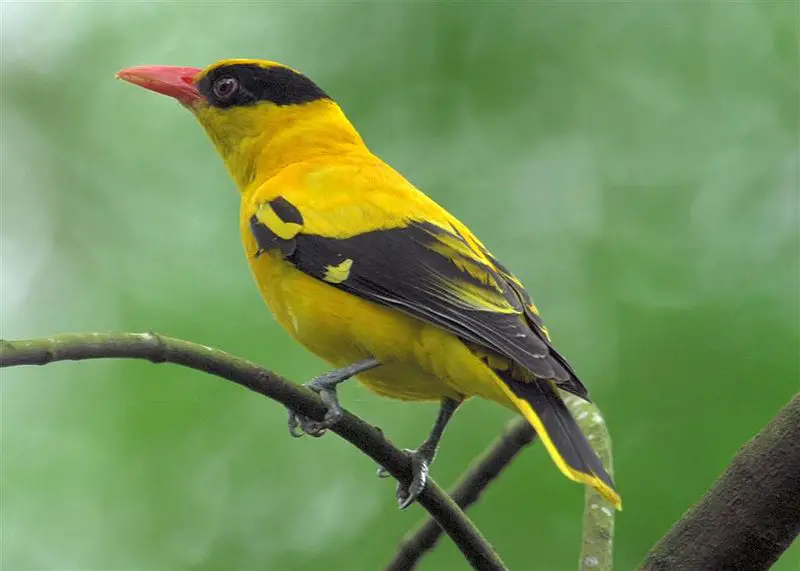
Old World orioles are a family of passerine birds found in the Old World. It comprises four genera: piopios, figbirds, pitohuis and the original genus Oriolus.
The African black-headed species have sometimes been removed from this latter group due to their distinct characteristics as well as other proposed splits for Oriolus.
These colorful birds can be identified by their bright yellow or orange plumage that often features darker markings on wings and head areas, although some species may also display a blue hue or stripes across the body feathers.
They typically feed on insects such as caterpillars and grasshoppers but will supplement with small fruits when available too – making them beneficial additions to gardens.Scientific classification:
| Kingdom | Animalia |
| Phylum | Chordata |
| Class | Aves |
| Order | Passeriformes |
| Superfamily | Orioloidea |
| Family | Oriolidae Vigors, 1825 |
14. Weavers
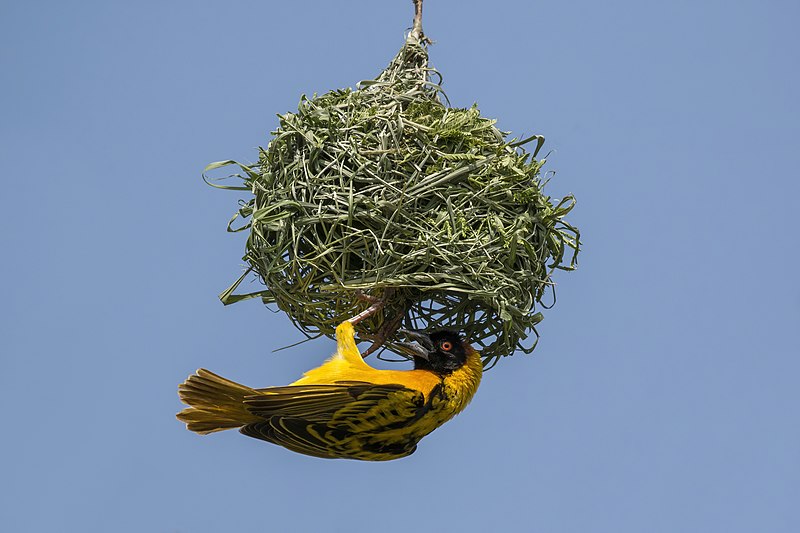
Weaver birds are small passerine birds found in the family Ploceidae. They are known for their intricately woven nests, made from vegetation and other materials sourced locally by the weavers.
These complex structures have earned them their distinctive name, as they appear to weave together a home away from home.
Weaverbirds come in a range of sizes and colours – some are brightly coloured while others may be more subtle or plainer looking – but all share an affinity with weaving material into intricate architectural designs.
Some species also use mud instead of plant life to build these impressive homes. Not only do these feathered architects give us insight into nature’s incredible capacity for problem-solving and resourcefulness; they provide stunningly colourful displays too.Scientific classification:
| Kingdom | Animalia |
| Phylum | Chordata |
| Class | Aves |
| Order | Passeriformes |
| Superfamily | Passeroidea |
| Family | Ploceidae Sundevall, 1836 |
15. Sylviid Warblers
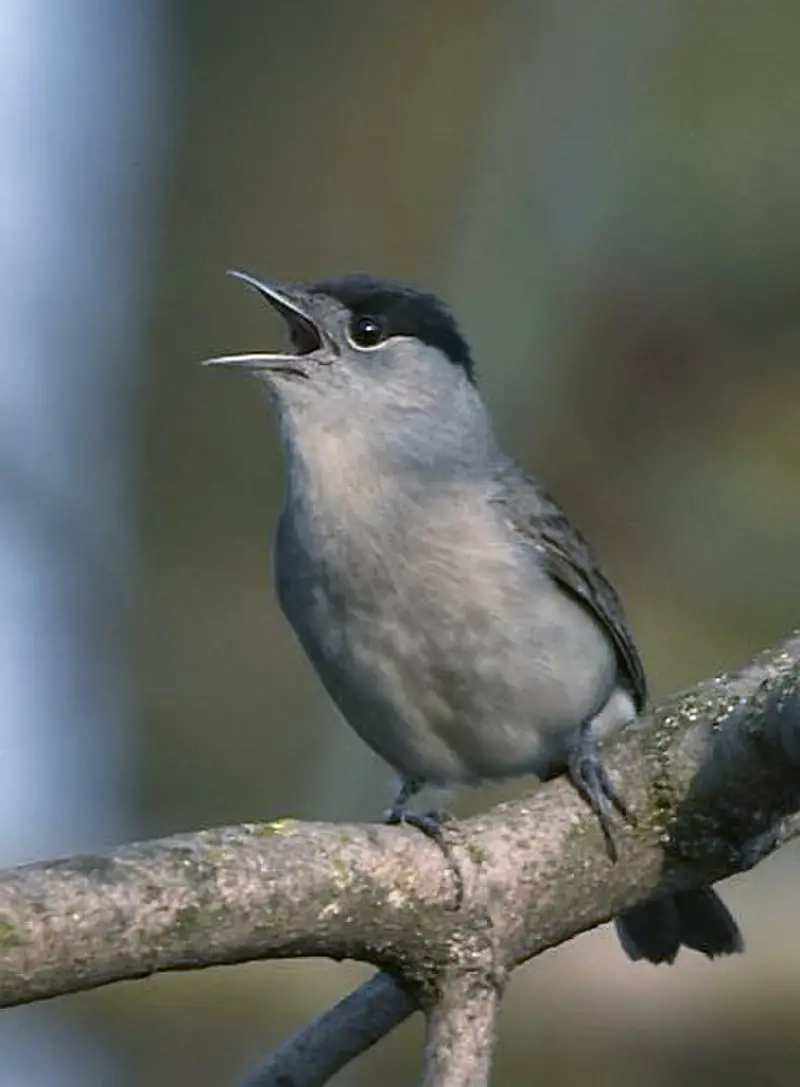
The Sylviid warblers are a family of passerine birds found in Eurasia and Africa. They include the typical warblers as well as babblers that were formerly part of the Old World babbler family.
These birds have slender bodies, pointed wings, long tails and strong legs adapted for ground-dwelling habits like running or hopping along branches.
The male often has bright colors while females are usually duller in coloration with more muted plumage patterns than males.
Some species also show sexual dimorphism where one sex may be larger or smaller than its counterpart; for instance some species may have longer tail feathers on the female side compared to their male counterparts.
Many members of this group feed on insects but some specialize on seeds, fruits, nectar or even frogs.Scientific classification:
| Kingdom | Animalia |
| Phylum | Chordata |
| Class | Aves |
| Order | Passeriformes |
| Superfamily | Sylvioidea |
| Family | Sylviidae Leach, 1820 |
16. Phasianidae
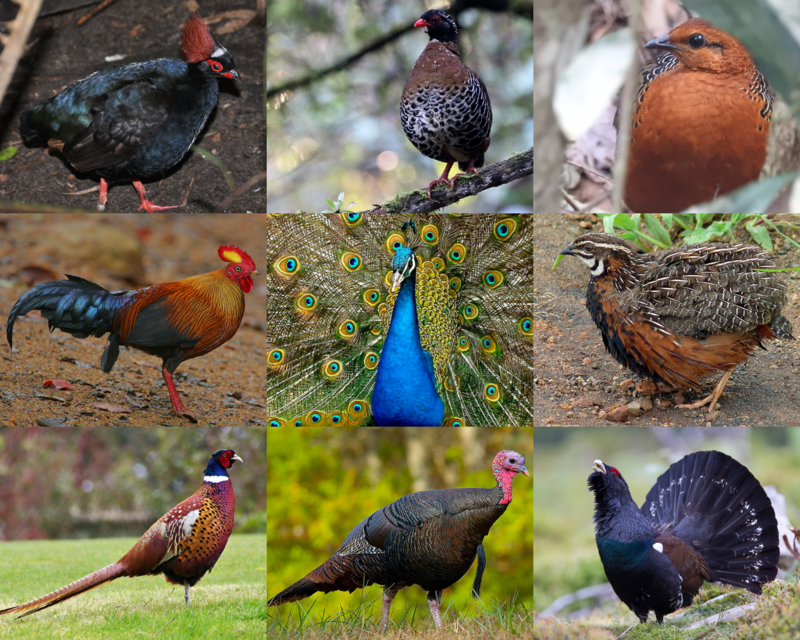
The Phasianidae family of birds is one that contains many popular gamebirds, with a total of 185 species divided across 54 genera.
These heavy ground-living birds include pheasants, partridges, junglefowl, chickens, and turkeys among others like Old World quail and peafowl.
This large family was formerly split into two subfamilies known as the Phasianinae and Perdicinae but this classification has since been changed to reflect more current scientific findings on them.
All these different types of birds have certain things in common such as their strong legs for scratching through leaves or soil looking for food items including insects, seeds, and other vegetation which makes up most of their diet.
They also all tend to be quite colorful in order to attract mates during breeding season when males will often display vibrant feathers or do dances around females in an attempt at courtship ritual displays.
The majority are monogamous creatures too although some may form short-term pair bonds before going off alone again once mating has taken place – either way.
There tends to be very little parental care given by adults after eggs have hatched so chicks need to fend for themselves right away.Scientific classification:
| Kingdom | Animalia |
| Phylum | Chordata |
| Class | Aves |
| Order | Galliformes |
| Superfamily | Phasianoidea |
| Family | Phasianidae Horsfield, 1821 |
17. Stilts And Avocets
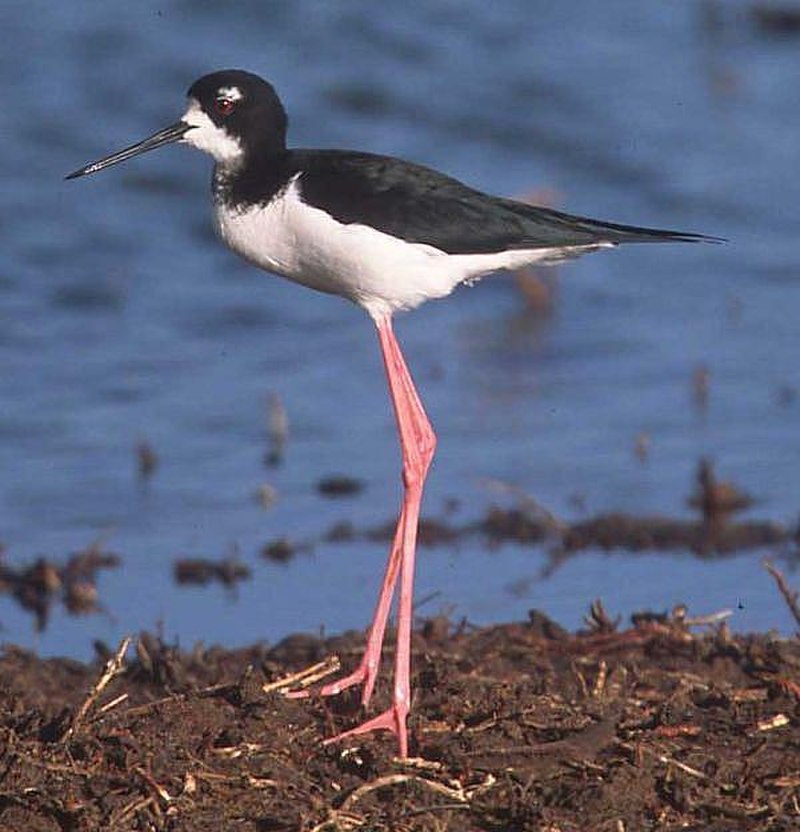
Stilts and avocets are two distinct groups of birds belonging to the family Recurvirostridae. They range in length from 30-46 cm (12-18 inches) and weigh between 140 – 435 g (4.9 – 15.3 ounces).
Males usually have slightly larger bodies than females, with long thin legs, necks and bills.
Avocet bills curve upwards uniquely while stilt beaks remain straight most times.
These wading birds live mainly near shorelines or wetlands where they feed on aquatic invertebrates like brine shrimp, insects etc., occasionally supplementing their diet with seeds or small fish too.
Stilts also inhabit open fields in search of food sources such as earthworms or grasshoppers during the non-breeding season.
Both groups migrate over large distances for warmer weathers when it gets cold outside.Scientific classification:
| Kingdom | Animalia |
| Phylum | Chordata |
| Class | Aves |
| Order | Charadriiformes |
| Suborder | Charadrii |
| Family | Recurvirostridae Bonaparte, 1854 |
18. Eurasian Penduline Tit
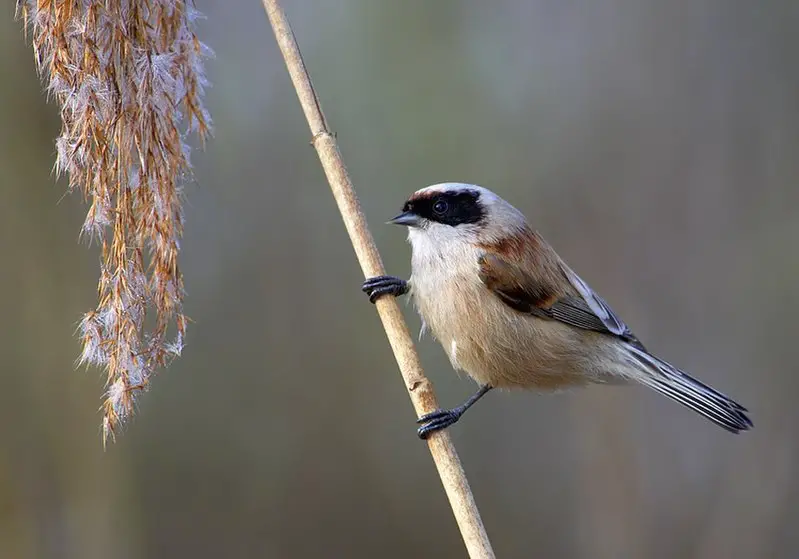
The Eurasian penduline tit is a passerine bird of the genus Remiz which can be found widely across the western Palearctic.
It migrates to more northern parts in summer, while staying resident in its southern range during winter months.
This species experienced an expansion of its breeding grounds throughout Western Europe between 1980s and 1990s, thus increasing its population significantly.
The Penduline Tit has various striking features like bright yellow underparts with black streaks on sides.
Greyish-brown upper part with white underside and pale eye line along head sides as well as distinctive tail nest made from fibers and mosses hanging from trees or shrubs like a pendulum hence their name ‘Penduline’.
These birds feed mainly on insects but also eat some seeds especially sunflower seeds making them popular garden visitors for many people.Scientific classification:
| Kingdom | Animalia |
| Phylum | Chordata |
| Class | Aves |
| Order | Passeriformes |
| Family | Remizidae |
| Genus | Remiz |
| Species | R. pendulinus |
19. Bee-Eater

Bee-eaters are one of the most beautiful and vibrant birds in existence. They have a slender body, long wings, down turned bills and their signature elongated central tail feathers which make them instantly recognizable from afar.
Their plumage is incredibly colorful with many shades ranging from blues to greens to reds that glisten when they fly through the air.
These stunning creatures can be found all over Africa, Asia, Southern Europe, Australia and New Guinea where they feed mainly on bees but also other insects like flies or wasps as well as small mammals such as lizards or rodents.
Bee-eaters live in colonies near rivers or wetlands so that they may easily hunt for food while staying close together for safety purposes.
Additionally it allows them to better display their impressive courtship dances during mating season.Scientific classification:
| Kingdom | Animalia |
| Phylum | Chordata |
| Class | Aves |
| Order | Coraciiformes |
| Family | Meropidae Rafinesque, 1815 |
20. Spotted Redshank
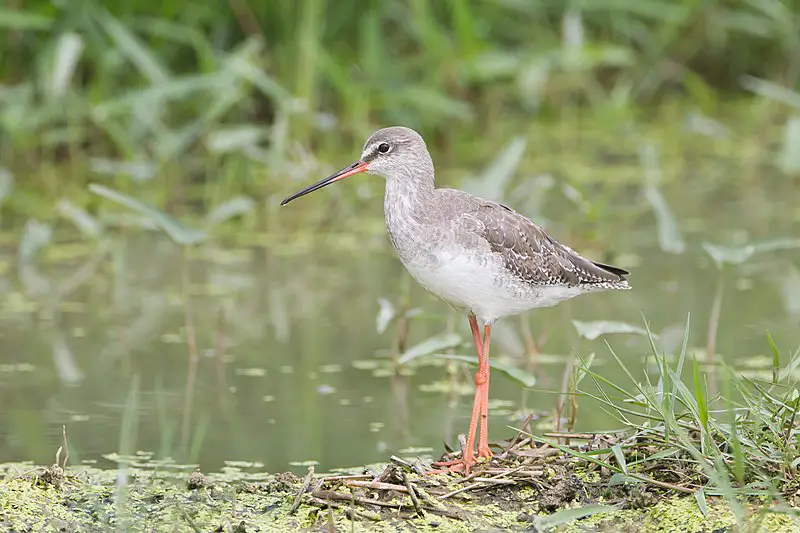
The Spotted Redshank is a shorebird belonging to the Scolopacidae family. Its genus name, Tringa, comes from Ancient Greek trungas and its specific erythropus refers to the red color of its feet.
This species can be found in wetlands across Europe and Asia during migratory periods but it primarily breeds in Northern Scandinavia.
It has a black body with white spots over its wings and neck while also having long yellow legs which help them wade through shallow waters looking for food such as insects, small fish, worms or mollusks.
Although they are not currently considered endangered they have experienced population declines due to changes in their habitat caused by human activities like pollution or coastal drainage projects.Scientific classification:
| Kingdom | Animalia |
| Phylum | Chordata |
| Class | Aves |
| Order | Charadriiformes |
| Family | Scolopacidae |
| Genus | Tringa |
| Species | T. erythropus |
21. Squacco Heron
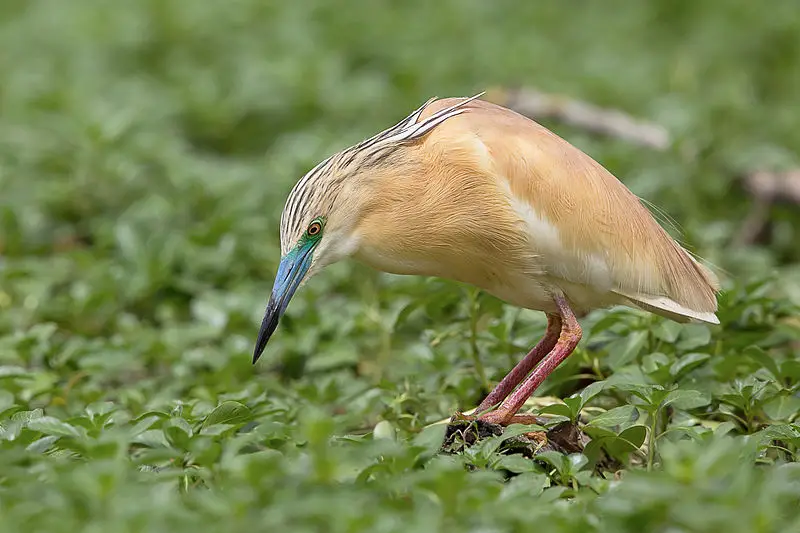
The Squacco Heron is a small heron species native to the Old World that breeds in parts of Europe and the Greater Middle East, before migrating south for winter.
They measure around 44-47 cm long with an 80-92 cm wingspan, making them one of the smaller species of herons.
Their body length measures 20-23cm while they have greyish or brown plumage on top and white or yellow underneath.
The neck has some streaking patterns giving it its name “squacco” which means speckled in Italian. It feeds mainly on fish, frogs and insects near shallow waters such as marshes, swamps and streams.
Rarely sighted north of their breeding grounds this curious little bird should be admired if spotted.Scientific classification:
| Kingdom | Animalia |
| Phylum | Chordata |
| Class | Aves |
| Order | Pelecaniformes |
| Family | Ardeidae |
| Genus | Ardeola |
| Species | A. ralloides |
Also Featured In: Most Common Romanian Birds, Native Birds of Kazakhstan
22. Namaqua Dove
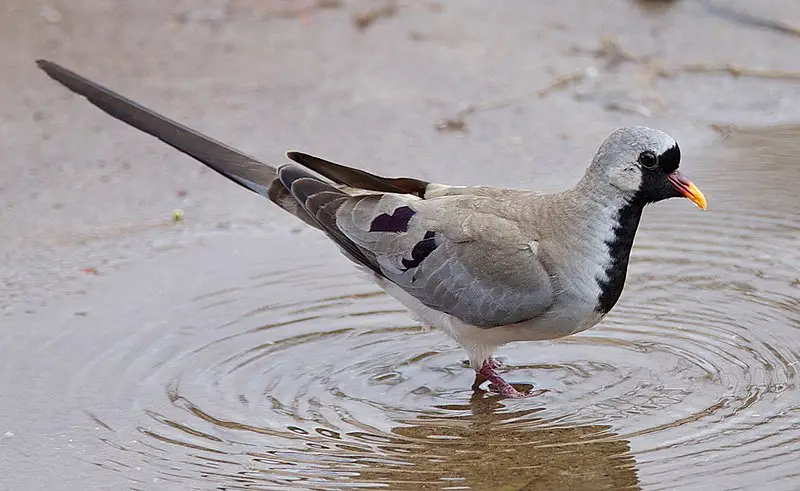
The Namaqua dove is a small pigeon that inhabits much of Sub-Saharan Africa, as well as Arabia and Madagascar.
It is the only species in its genus Oena, which has close affinities with the doves from Turtur.
Described for science by French zoologist Mathurin Jacques Brisson back in 1760, it typically measures between 26 to 28 cm long and boasts distinctive reddish plumage on its head, neck and breast region.
Its diet consists mainly of grains such as millet or wheat; however they may also feed on insects during dry spells when food sources are scarce.
The population size remains stable overall but localised declines have been observed due to human activities like habitat destruction and hunting for subsistence use or sport purposes.Scientific classification:
| Kingdom | Animalia |
| Phylum | Chordata |
| Class | Aves |
| Order | Columbiformes |
| Family | Columbidae |
| Genus | Oena Swainson, 1837 |
| Species | O. capensis |
23. Isabelline Wheatear
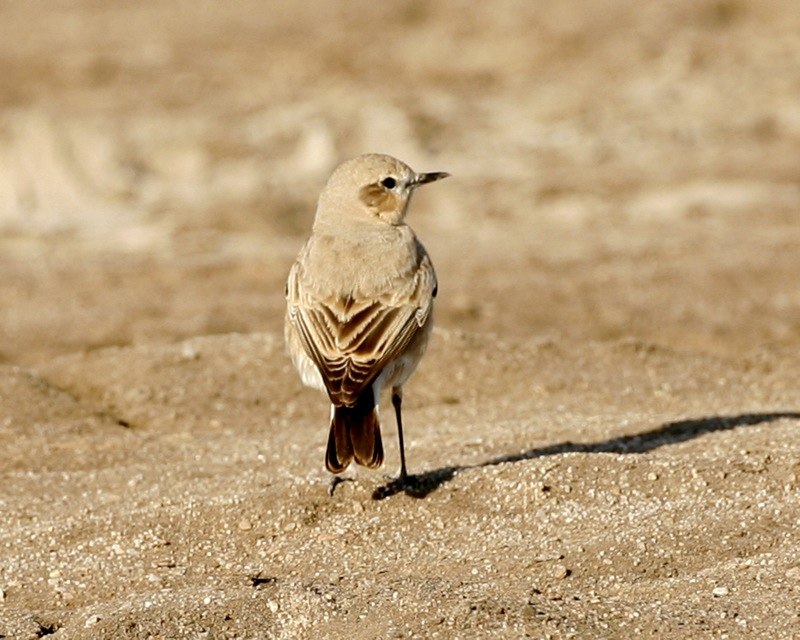
The Isabelline Wheatear is a small passerine bird belonging to the Muscicapidae family. It can be found in steppes and open countryside, breeding from southern Russia through Central Asia all the way down to northern Pakistan.
During wintertime it migrates southwards for warmer climates. Its diet mainly consists of insects which makes this species an insectivorous one.
Its usual hunting ground is on low vegetation or on bare soil where it searches for food with its agile movements and sharp bill.
The males are distinguished by their grey upperparts, light underside with buff markings around wings and tail as well as their white brow stripe that gives them their name: “Isabellina”.Scientific classification:
| Kingdom | Animalia |
| Phylum | Chordata |
| Class | Aves |
| Order | Passeriformes |
| Family | Muscicapidae |
| Genus | Oenanthe |
| Species | O. isabellina |
24. Spanish Sparrow
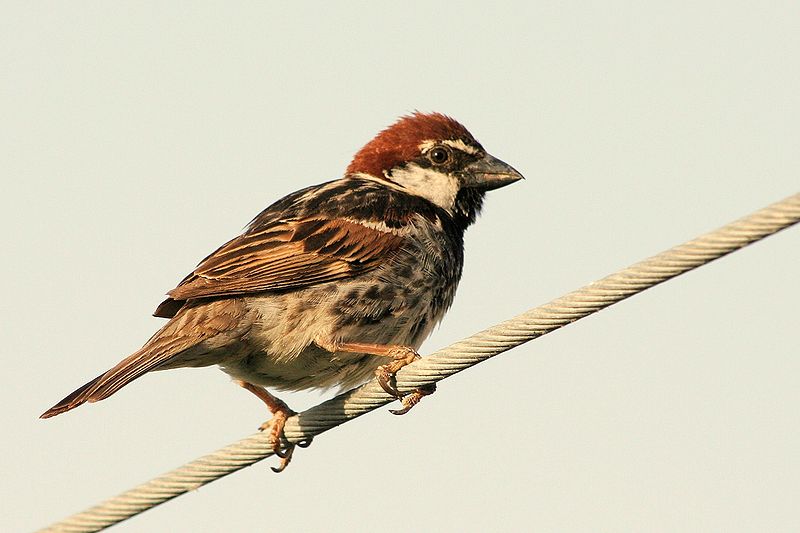
The Spanish sparrow or willow sparrow (Passer hispaniolensis) is a beautiful member of the passerine bird family Passeridae, found mainly in the Mediterranean region and south-west and central Asia.
With its striking colouration – having chestnut brown upperparts with black streaks on its back and wings, white underparts with greyish sidesand a distinctive black line running down either side of its head – it can easily be distinguished from other species.
It shares many physical characteristics with the closely related house sparrow but has some subtle differences such as being slightly smaller in size.
In addition to being an attractive species, they are also very sociable birds often nesting together in colonies making them easy to observe by birdwatchers alike.
Unfortunately hybridisation between these two species complicates their taxonomy which needs further research for clarification.Scientific classification:
| Kingdom | Animalia |
| Phylum | Chordata |
| Class | Aves |
| Order | Passeriformes |
| Family | Passeridae |
| Genus | Passer |
| Species | P. hispaniolensis |
Also Featured In: Italian Birds You Should Know, Birds that Live in Croatia
25. Lesser Sand Plover
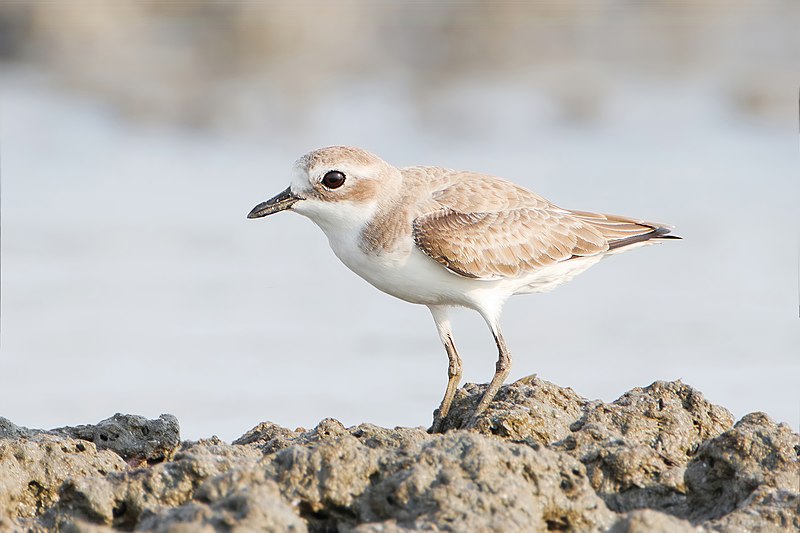
The Lesser Sand Plover is a small wader bird belonging to the plover family. It has yellowish-brown upperparts and white underparts, with a distinct black band across its chest and whitish forehead.
Its wings are short but powerful, allowing it to cover large distances in search of food such as insects, worms or crustaceans found on muddy beaches or shallow lagoons near coasts.
The species prefers habitats with low vegetation like sandy deserts, coastal dunes and salt flats where they can hide among the sand grains while foraging for food during their migrations between Africa and Asia.
These birds form monogamous pairs that breed annually in springtime; nests consist of scrapes made on the ground lined with pebbles or shells carefully arranged by both parents who will vigorously defend them against predators until chicks fledge after about four weeks from hatching.Scientific classification:
| Kingdom | Animalia |
| Phylum | Chordata |
| Class | Aves |
| Order | Charadriiformes |
| Family | Charadriidae |
| Genus | Charadrius |
| Species | C. mongolus |
26. Desert Wheatear
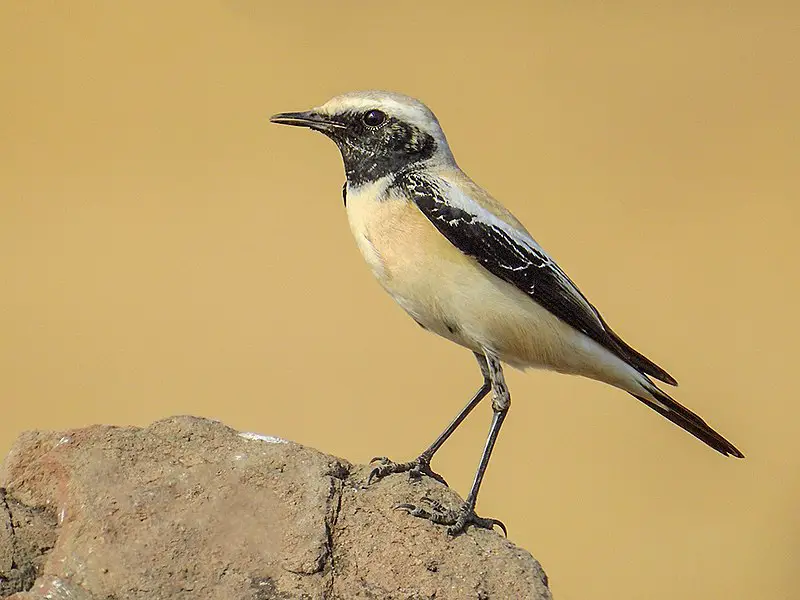
The Desert Wheatear is a small passerine bird that typically inhabits desert and semi-desert areas. It measures 14.5 to 15 cm in length, making it slightly larger than most thrushes but smaller than many Old World flycatchers.
The upper parts of this species are greyish-brown with black streaking, while the underparts are whitish or buffy white with some cinnamon on its sides and flanks.
Its tail has two prominent white bars at the tip which contrast starkly against its otherwise dark plumage.
During breeding season males will often display their conspicuous orange throat patch as part of courtship behaviour towards females of the species.
However, outside of mating season both sexes share identical plumages without any discernible differences between them apart from size variations common among all birds.
This insectivorous species mostly feeds on flying insects such as moths, beetles and bees that they catch midair during short sallies out into open spaces near coverts where they can hide if threatened by predators like other birds or mammals roaming their habitat range throughout Eurasia including rare vagrants to western Europe.Scientific classification:
| Kingdom | Animalia |
| Phylum | Chordata |
| Class | Aves |
| Order | Passeriformes |
| Family | Muscicapidae |
| Genus | Oenanthe |
| Species | O. deserti |
27. Western Reef Heron
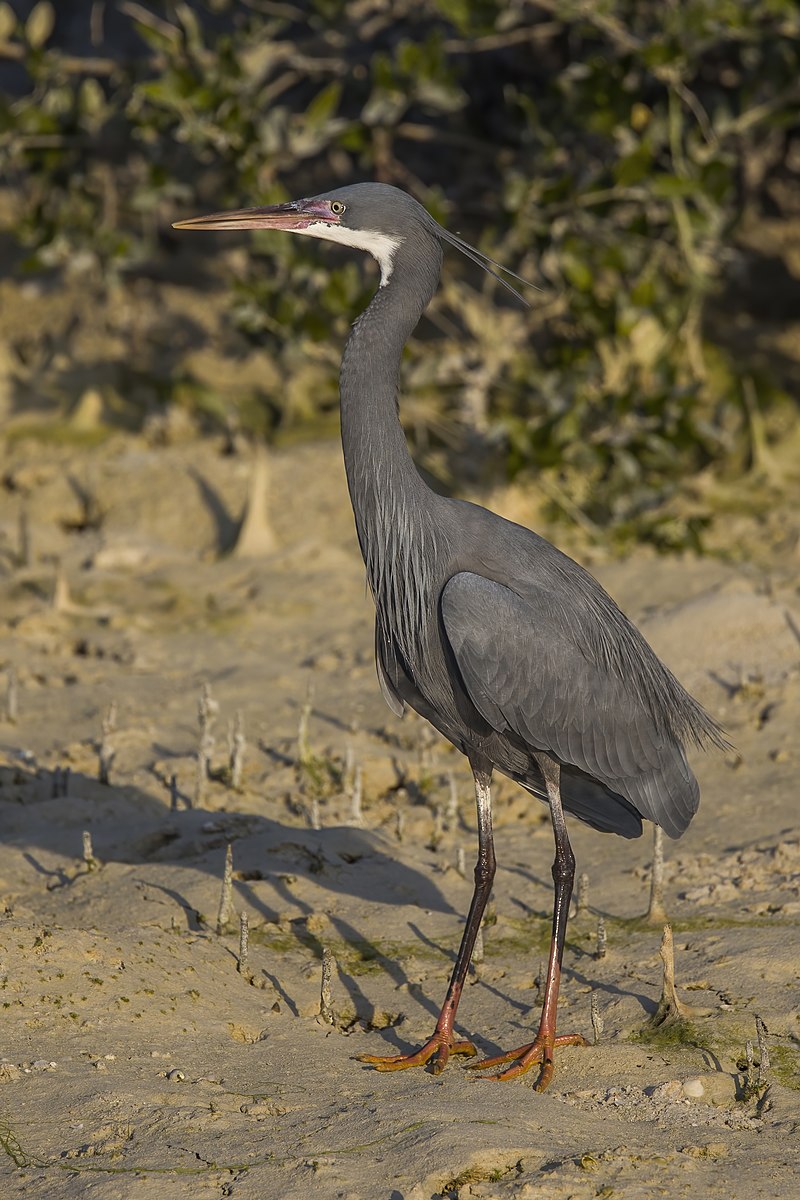
The western reef heron, also known as the western reef egret, is a medium-sized bird found in southern Europe, Africa and some parts of Asia. It usually inhabits coastal areas and has two distinctive plumage forms.
The slaty-grey form can be mistaken for the rare dark morph of the Little Egret while its white form looks similar to that of an immature Grey Heron.
This species feeds mainly on fish but will occasionally eat insects or other small aquatic animals like crabs and molluscs too.
Western Reef Herons are solitary birds that nest near water bodies where they build nests from sticks which may sometimes contain feathers or seaweed as well.
They have become endangered since their habitats have been destroyed due to human activities such as building developments along coastlines; however conservation efforts are being taken to ensure their survival into future generations.Scientific classification:
| Kingdom | Animalia |
| Phylum | Chordata |
| Class | Aves |
| Order | Pelecaniformes |
| Family | Ardeidae |
| Genus | Egretta |
| Species | E. gularis |
28. Lesser Crested Tern
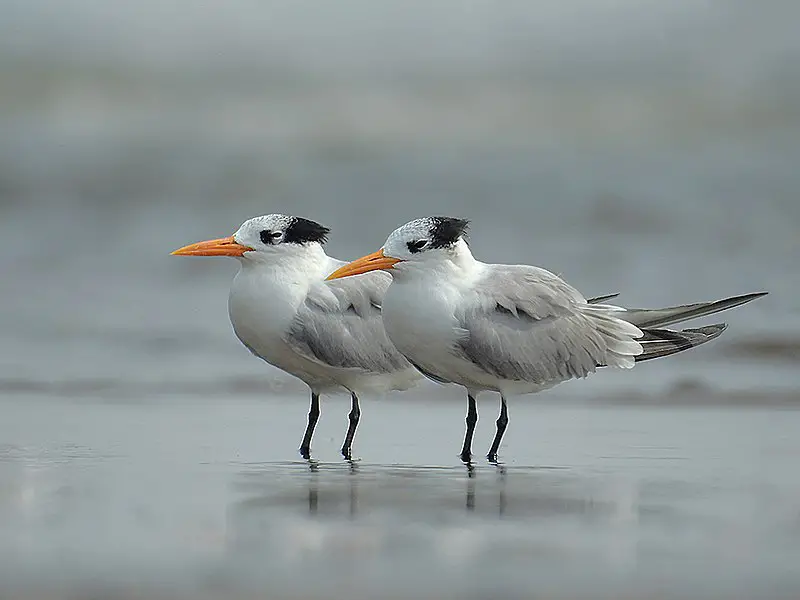
The lesser crested tern is a beautiful bird belonging to the Laridae family. It can be found breeding in subtropical coastal parts of the world, mainly from Red Sea across Indian Ocean.
Its genus name comes from Ancient Greek word Thalasseus which means fisherman and its specific bengalensis refers to Bengal, historically referring to much of northern India and Bangladesh.
The adult has white plumage with grey on wings and back; black cap extending behind eye; long pointed bill yellow tipped red at base, orange legs and feet.
They feed primarily by plunge-diving for fish near shore but may also take some insects or scavenge off boats or piers when given opportunity.
This species nests in colonies often on beaches or islands with other seabirds where it lays two eggs per clutch that are incubated for about a month before hatching.Scientific classification:
| Kingdom | Animalia |
| Phylum | Chordata |
| Class | Aves |
| Order | Charadriiformes |
| Family | Laridae |
| Genus | Thalasseus |
| Species | T. bengalensis |
29. Isabelline Shrike
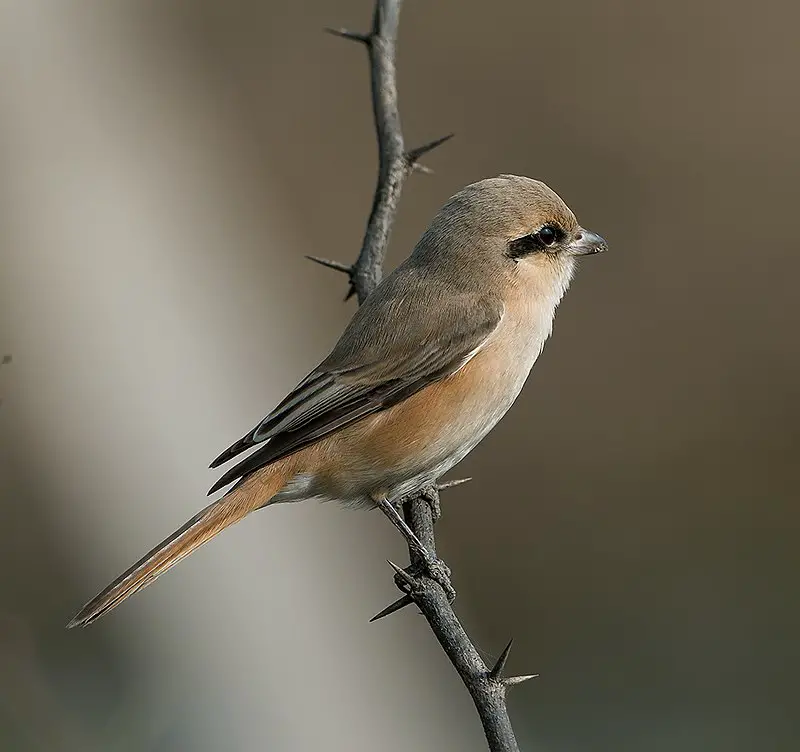
The Isabelline Shrike is a member of the shrike family, Laniidae, and was previously thought to be congeneric with the Red-backed or Red-tailed Shrikes.
It has an extensive range across many countries from Caspian Sea in Western Asia all the way eastward up to Central China’s Qaidam Basin.
During winter months it migrates southwards towards Africa and Arabia for warmer climates.
Its genus name ‘Lanius’ is derived from Latin meaning “butcher”, as its diet consists mainly of small insects and sometimes even lizards or sparrows.
The Isabelline Shrike can easily be identified by its brownish grey coloration along with black wings having white wingtips plus two white bars on each side of their tail feathers.Scientific classification:
| Kingdom | Animalia |
| Phylum | Chordata |
| Class | Aves |
| Order | Passeriformes |
| Family | Laniidae |
| Genus | Lanius |
| Species | L. isabellinus |
30. Blue-Cheeked Bee-Eater
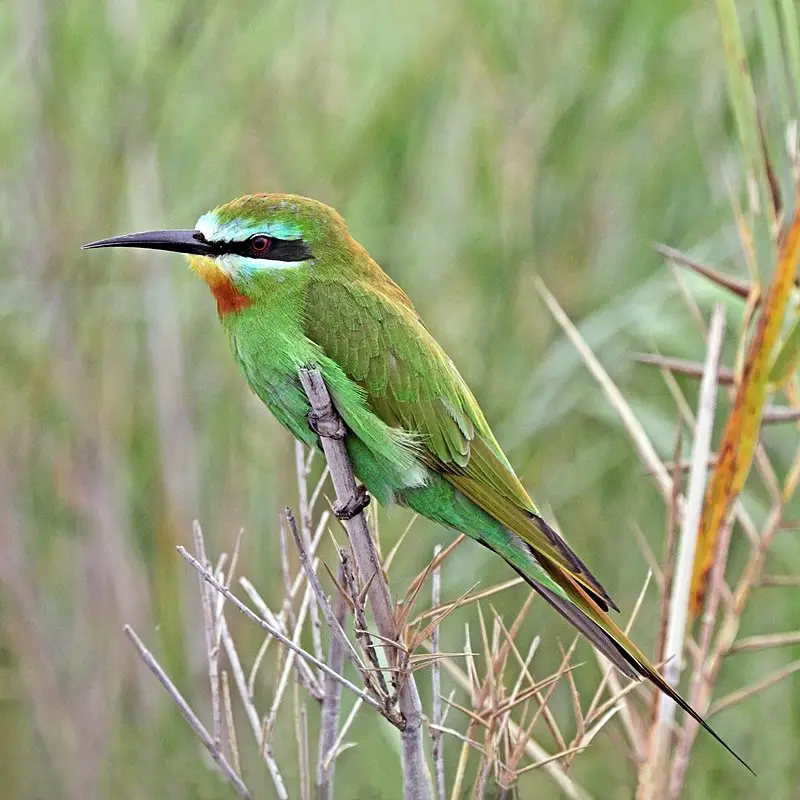
The Blue-cheeked Bee-eater (Merops persicus) is a stunningly beautiful bird belonging to the Meropidae family. It has an unmistakeable blue coloring on its cheeks and neck, which stands out against its yellow body plumage.
This species of bee-eater can be found in Northern Africa, Middle East countries from Turkey eastwards till Kazakhstan, and India as well.
During winter they migrate south to tropical regions of Africa while some populations remain put for breeding purposes year round.
They are adept at catching insects midair with their long curved bills which makes them excellent predators in open grasslands or savannas where bees and other insects thrive abundantly.
So if you ever happen across these vibrant beauties make sure to take a moment pause and appreciate nature’s wonders.Scientific classification:
| Kingdom | Animalia |
| Phylum | Chordata |
| Class | Aves |
| Order | Coraciiformes |
| Family | Meropidae |
| Genus | Merops |
| Species | M. persicus |
31. White-Winged Tern
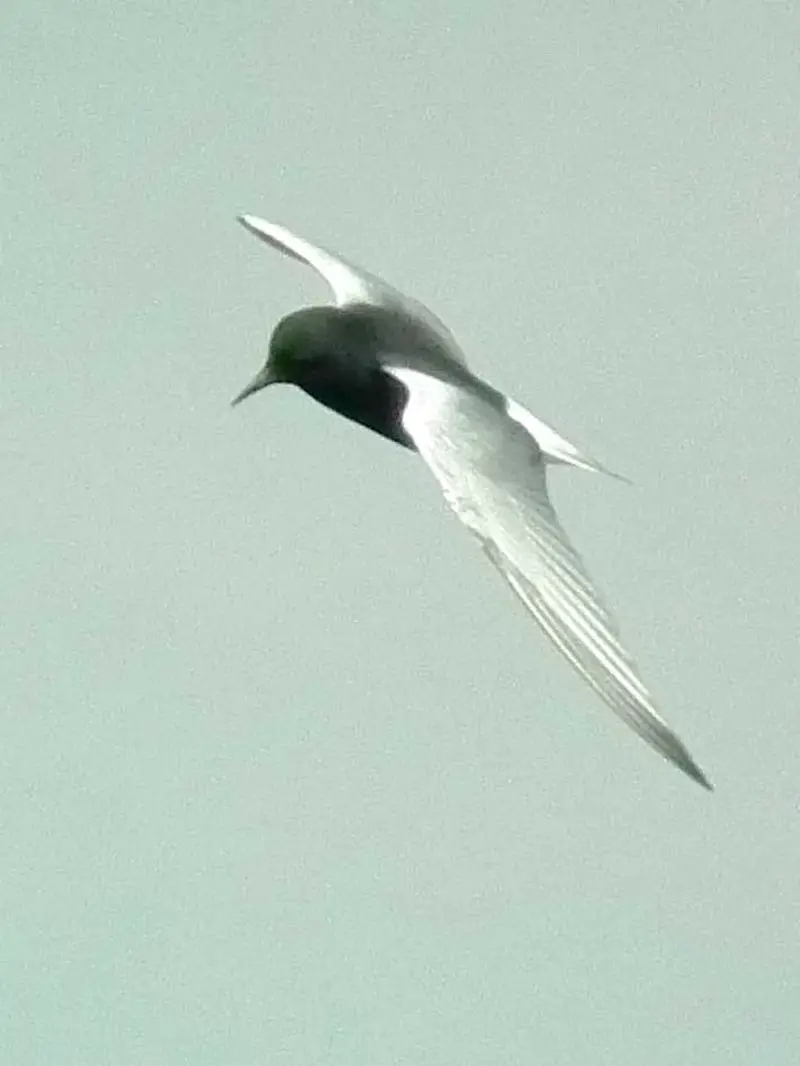
The White-winged Tern is a small species of tern found across much of the world, from Europe to Africa and Asia, inhabiting fresh water habitats.
With its scientific name Chlidonias leucopterus or Chlidonias leucoptera coming from Ancient Greek meaning ‘swallow-like’, it has white wings giving it an unmistakable appearance in flight.
It feeds on insects by swooping down over water surfaces at high speed and snatching them up with its beak while skimming the surface.
This bird also nests near bodies of freshwater such as lakes, rivers and marshes making use of reeds for cover against predators when they’re raising their chicks.
A beautiful sight to behold wherever they are found.Scientific classification:
| Kingdom | Animalia |
| Phylum | Chordata |
| Class | Aves |
| Order | Charadriiformes |
| Family | Laridae |
| Genus | Chlidonias |
| Species | C. leucopterus |
Also Featured In: Common Serbian Birds, Armenian Birds You Should Know
32. Slender-Billed Gull
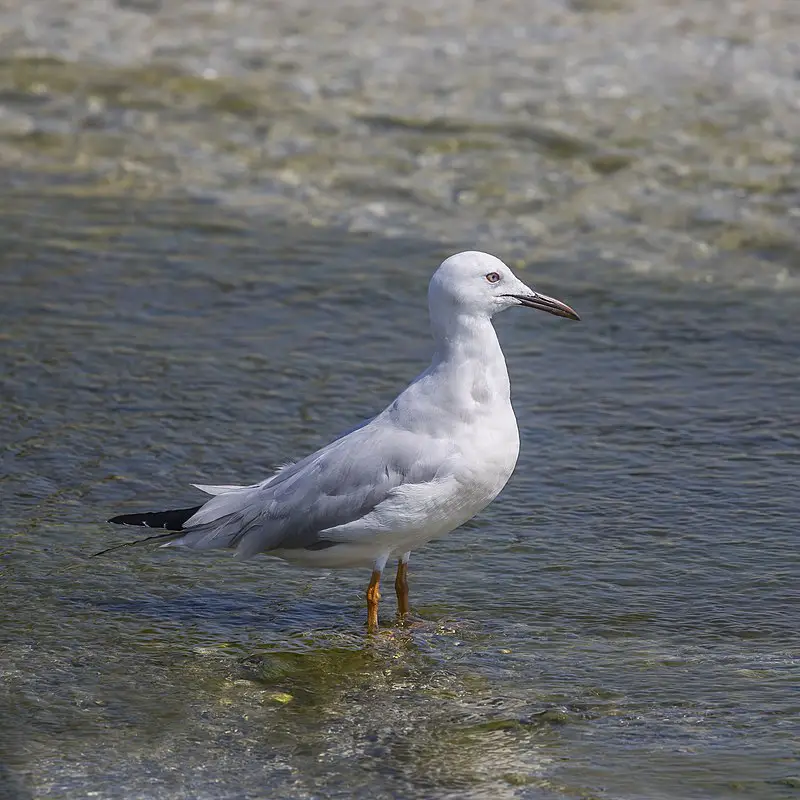
The Slender-billed Gull is a medium sized, migratory bird. It breeds in coastal lagoons and islands around the Mediterranean Sea and North Indian Ocean regions such as Pakistan.
During winter it travels further south to areas like Africa and India, but some individuals have been known to wander off towards western Europe too.
Its long slender bill gives this species its name; an unmistakable feature for identifying these birds among other gulls.
They are generally greyish-brown or white with black wingtips when seen from afar; although up close you can also make out their yellow legs and beak which contrasts nicely against its colouration.
Despite being classified as Least Concern by IUCN they still suffer threats of habitat destruction due to development projects that target their nesting sites along coastlines.Scientific classification:
| Kingdom | Animalia |
| Phylum | Chordata |
| Class | Aves |
| Order | Charadriiformes |
| Family | Laridae |
| Genus | Chroicocephalus |
| Species | C. genei |
33. Gull-Billed Tern
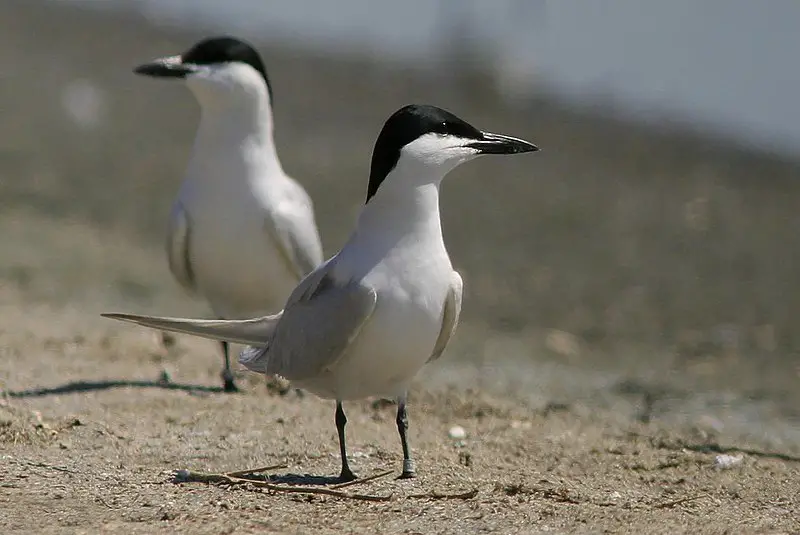
The Gull-billed Tern is a species of seabird from the Laridae family. It has an extensive range, breeding in parts of Europe, Asia, Northwest Africa and North America.
It was formally described by Johann Friedrich Gmelin in 1789 as Sterna nilotica before being reclassified to Gelochelidon nilotica.
The Australian subspecies was previously considered separate but now included with this species.
They are quite small birds measuring around 24 cm long with greyish brown upperparts throughout their body and white underneaths along with black legs and feet.
Their head also features a distinctive yellow bill which they use to hunt for fish on rivers or coasts near shallow waters where they tend to nest during summer months on ground level instead of trees like other terns do usually.Scientific classification:
| Kingdom | Animalia |
| Phylum | Chordata |
| Class | Aves |
| Order | Charadriiformes |
| Family | Laridae |
| Genus | Gelochelidon |
| Species | G. nilotica |
34. Collared Pratincole
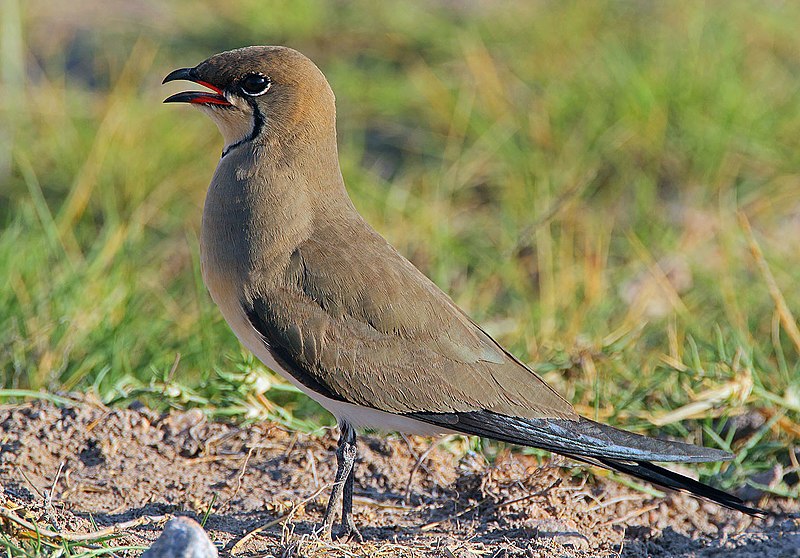
The Collared Pratincole is a small wader bird native to the Old World. It has distinctive long wings that are reddish-brown in color and have white tips, which give it its name.
Its body is mostly dark brown with some lighter spots along its back and sides. The bill of this species is short and pointed, making it a specialist for eating insects from mudflats or shallow waters.
During breeding season, they form loud flocks that can be heard from miles away when calling out their distinct song; during non-breeding time they disperse into smaller groups while searching for food sources in drier regions such as grasslands or fields.
This species relies heavily on open habitats where there are plenty of places to hunt for food throughout the year.Scientific classification:
| Kingdom | Animalia |
| Phylum | Chordata |
| Class | Aves |
| Order | Charadriiformes |
| Family | Glareolidae |
| Genus | Glareola |
| Species | G. pratincola |
35. Curlew Sandpiper
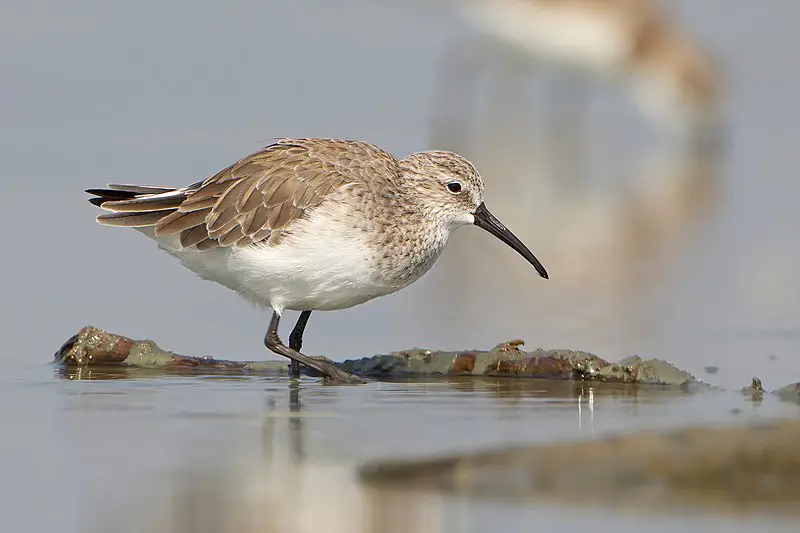
The Curlew Sandpiper is a small wader that breeds in the Arctic tundra of Siberia. It’s strongly migratory, wintering mainly in Africa but also found as far away as Australia and New Zealand.
This bird has been spotted occasionally on North American shores too. The species was first described by Erik Pontoppidan from Denmark back in 1763 under the scientific name Tringa ferrugineus.
Its plumage is predominantly grey-brown with white underneath which gives it its unique look among other sandpipers.
As one of the most long distance migrants known to science, this amazing creature will travel thousands of miles every year just for food and shelter.Scientific classification:
| Kingdom | Animalia |
| Phylum | Chordata |
| Class | Aves |
| Order | Charadriiformes |
| Family | Scolopacidae |
| Genus | Calidris |
| Species | C. ferruginea |
Also Featured In: British Columbian Birds, Birds that Migrate to Sri Lankan
36. Broad-Billed Sandpiper
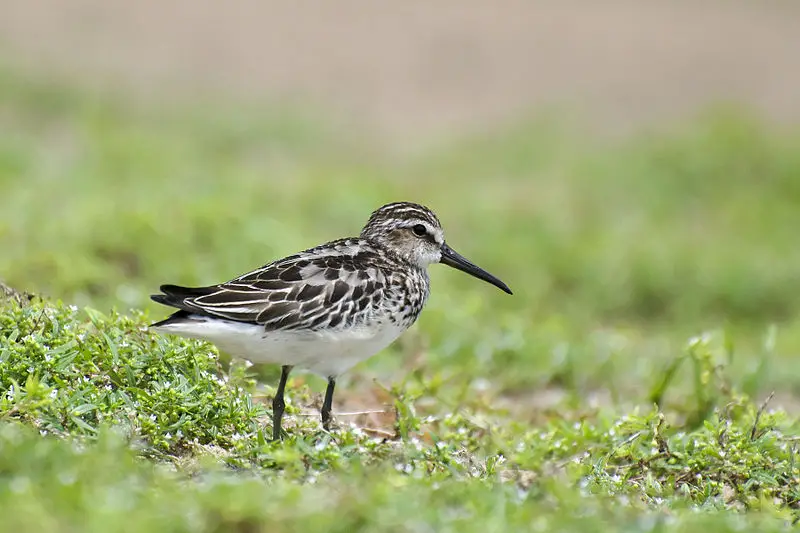
The Broad-billed Sandpiper is a small wading bird, about the same size as the Dunlin but with a longer, straighter bill and shorter legs.
It breeds in Arctic tundra areas of northern Europe and Asia; during winter it migrates to tropical coasts where it can be found along rocky shores or mudflats.
Its scientific name derives from Latin – ‘falcinella’ meaning “sickle”. Recent research has suggested that this species should rather be classified in the genus Philomachus.
The Broad-billed Sandpiper has mottled brown plumage on its back and wings which become more white towards its belly, while its neck is reddish brown streaked black at times.
These birds feed on insects by picking them off wet surfaces like rocks or mudflat sandbanks while they are standing usually still for long periods of time.
Occasionally they will also probe into soft substrate with their bills when searching for food items like larvae or worms beneath.Scientific classification:
| Kingdom | Animalia |
| Phylum | Chordata |
| Class | Aves |
| Order | Charadriiformes |
| Family | Scolopacidae |
| Genus | Calidris |
| Species | C. falcinellus |
37. Greater Sand Plover
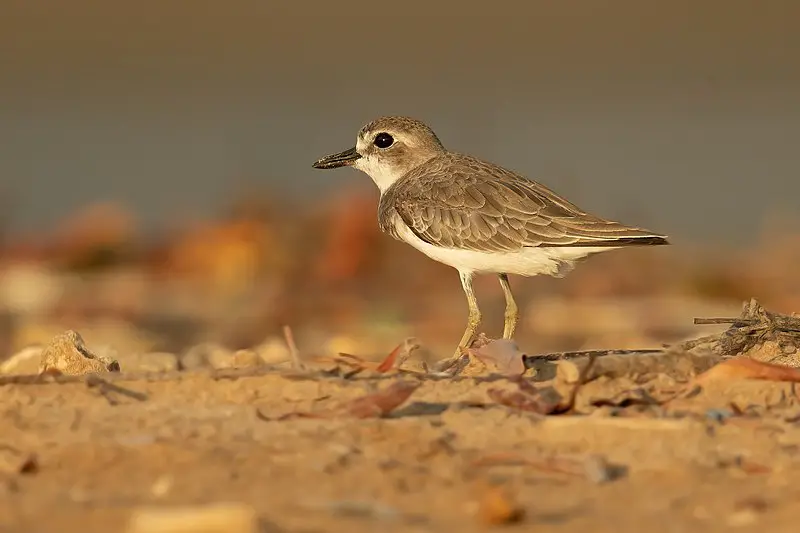
The Greater Sand Plover is a small wader, belonging to the plover family of birds. It’s scientific name Charadrius leschenaultii comes from the Latin word for a yellowish bird mentioned in the 4th century Vulgate.
These birds are typically found along coasts and sandy beaches where they feed on insects, mollusks and crustaceans.
They have grey-brown upperparts with white underparts and characteristic black bands across their chest as well as a prominent white forehead patch.
The Greater Sand Plovers breed mainly in India, Southeast Asia, Northern Australia and New Guinea while migrating to wintering grounds at coasts around South East Asia during nonbreeding season.
This species relies heavily on coastal wetlands so it is essential that these habitats be preserved in order for this species to survive into future generations.Scientific classification:
| Kingdom | Animalia |
| Phylum | Chordata |
| Class | Aves |
| Order | Charadriiformes |
| Family | Charadriidae |
| Genus | Charadrius |
| Species | C. leschenaultii |
38. Terek Sandpiper
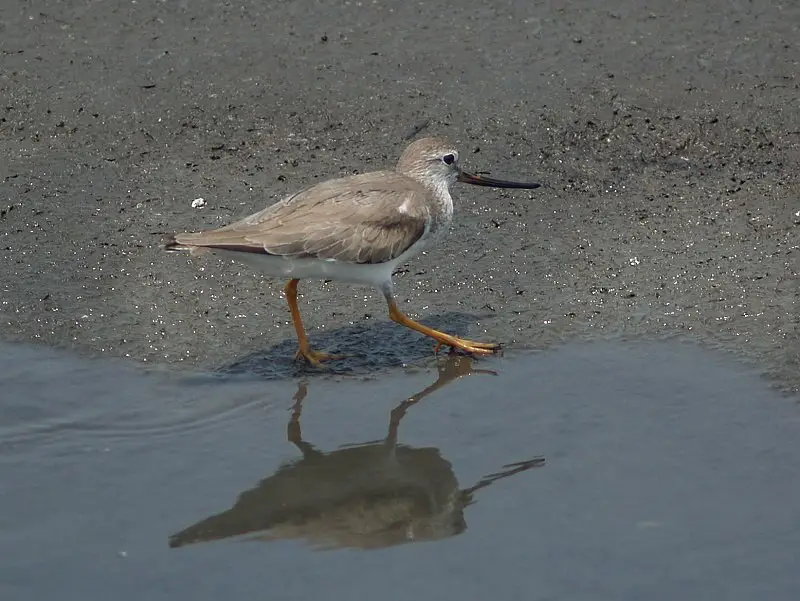
The Terek sandpiper is a small, migratory wader species belonging to the Palearctic region. It is named after the Terek River which flows into the west of Caspian Sea, where it was first spotted in 1775 by German naturalist Johann Anton Güldenstädt.
This bird has a mottled brown back and wings with white underparts and yellow legs.
Its diet consists mainly of insects but also includes crustaceans, molluscs and plant material found on mudflats during its breeding season in temperate regions like Siberia or northern China.
During winter migration they can be seen as far south as India or Australia making them one of few truly cosmopolitan shorebirds.
The species faces threats from habitat destruction due to human activities such as development for agriculture or industry leading to decrease in population size over timeScientific classification:
| Kingdom | Animalia |
| Phylum | Chordata |
| Class | Aves |
| Order | Charadriiformes |
| Family | Scolopacidae |
| Genus | Xenus Kaup, 1829 |
| Species | X. cinereus |
Also Featured In: Birds Live in Tunisia,
39. Rufous-Tailed Scrub Robin
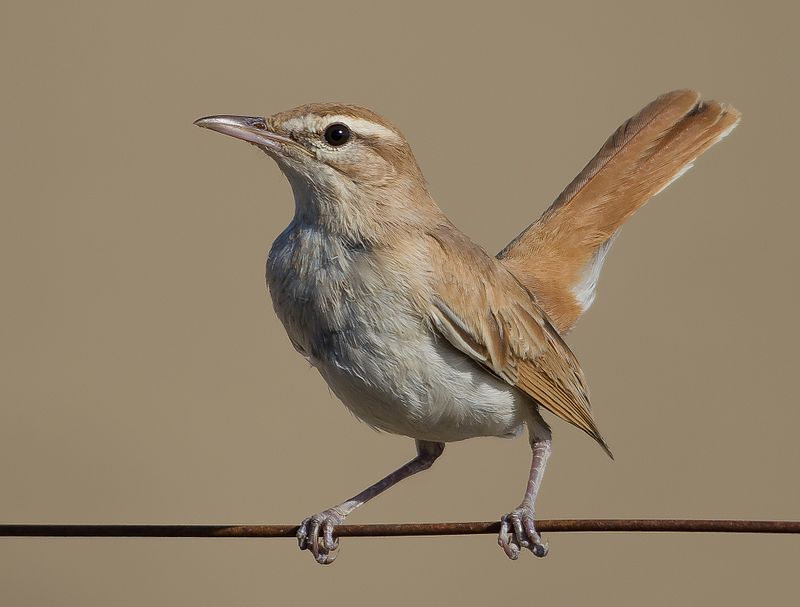
The Rufous-tailed Scrub Robin is a medium-sized bird belonging to the Muscicapidae family. It breeds in many areas, such as around the Mediterranean, east to Pakistan and south of the Sahara from Sahel region east to Somalia.
Its plumage consists of a rufous tail with grey underparts and blackish upperparts; its wings are whitish beneath with dark patches on them.
This robin feeds mainly on insects but will occasionally take some berries or seed if available.
When breeding, it builds cup shaped nests out of twigs and grasses which are found close to ground level among shrubs for protection during incubation period.
Their song is typically composed of loud chirps that can be heard up at quite a distance making them easy identifiable when in their native range.Scientific classification:
| Kingdom | Animalia |
| Phylum | Chordata |
| Class | Aves |
| Order | Passeriformes |
| Family | Muscicapidae |
| Genus | Cercotrichas |
| Species | C. galactotes |
40. Upcher’s Warbler
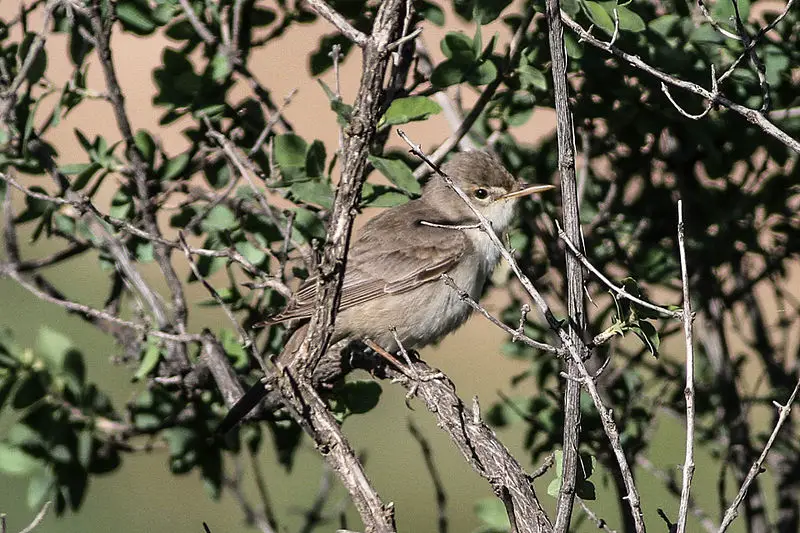
Upcher’s warbler is a small passerine bird belonging to the Old World tree warbler genus Hippolais.
It breeds in parts of Turkey, Pakistan and other countries before migrating south eastwards during winter to Eritrea, Somalia and Tanzania.
This species prefers semi-desert habitats like bushy scrubland or tamarisk thickets for nesting purposes.
During breeding season four or five eggs are laid which form part of its diet when incubated by both parents until hatching within two weeks’ time period.
Its plumage consists mainly of greyish brown colouring with an off white underside as well as a distinct black eye stripe across its face giving it quite a unique look among similar birds in the same family.Scientific classification:
| Kingdom | Animalia |
| Phylum | Chordata |
| Class | Aves |
| Order | Passeriformes |
| Family | Acrocephalidae |
| Genus | Hippolais |
| Species | H. languida |
41. White-Cheeked Tern
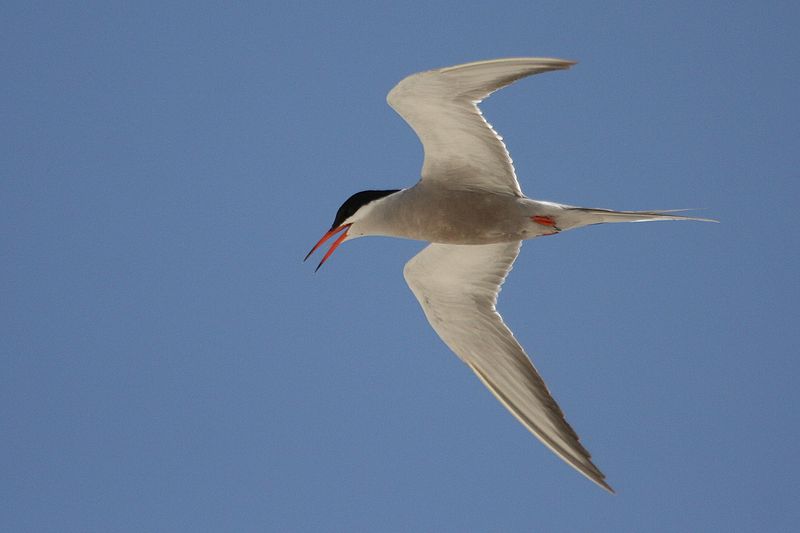
White-cheeked terns are a species of sea birds found along the coasts on the Red Sea, Horn of Africa to Kenya and Persian Gulf. They migrate during winter season with colonies ranging from 10 to 200 pairs.
These birds have white cheeks and grey upperparts which contrast against their black cap, wings and tail feathers.
In addition they possess long pointed bills making them excellent hunters for fish in both fresh or salt water habitats.
Generally solitary outside breeding times they feed using plunge dives into the water while airborne or even swimming if necessary.
During nesting time these terns become more social as parents share incubation duties before fledging young once hatched successfully.Scientific classification:
| Kingdom | Animalia |
| Phylum | Chordata |
| Class | Aves |
| Order | Charadriiformes |
| Family | Laridae |
| Genus | Sterna |
| Species | S. repressa |
42. Indian Silverbill
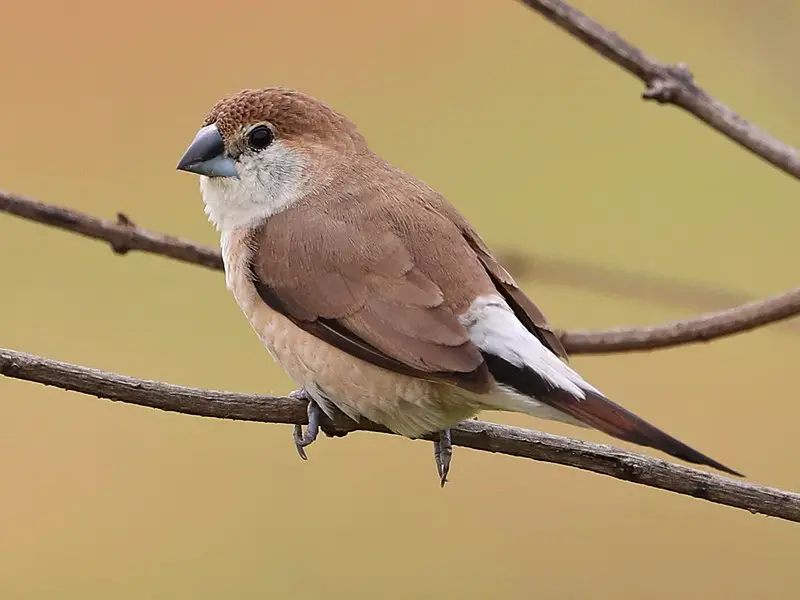
The Indian silverbill is a small passerine bird found in the Indian Subcontinent and adjoining regions.
It has grey upperparts, white underparts with black barring on its breast and abdomen, bluish-white wings and tail feathers; Males have bright red eyes while females have brownish eyes.
This estrildid finch species inhabits dry areas of the Middle East region as well as the subcontinent where it breeds commonly.
The diet of this species consists mainly of grass seeds supplemented by insects during breeding season.
Although they are not known to be migratory birds, they may flock together when food sources become scarce in their native range due to drought or other environmental conditions.
They can also now be found outside their natural range following introductions from humans for aviculture purposesScientific classification:
| Kingdom | Animalia |
| Phylum | Chordata |
| Class | Aves |
| Order | Passeriformes |
| Family | Estrildidae |
| Genus | Euodice |
| Species | E. malabarica |
43. Graceful Prinia
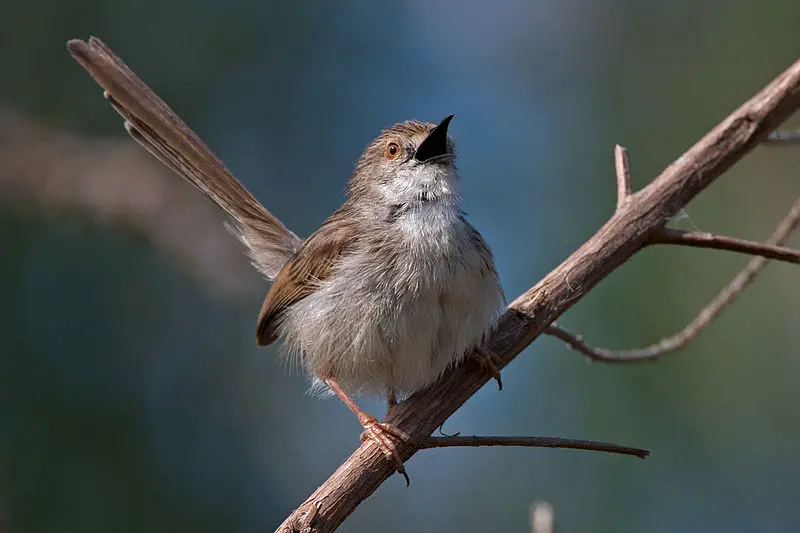
The Graceful Prinia is a small warbler, found in northeastern Africa and southern Asia. It has adapted to living in shrub or tall grass habitats where it can search for insects and other food sources.
This active bird is most commonly known for its unique song which resembles the chirping of crickets.
Its coloring includes brownish-gray upperparts with white underparts, dark streaks on its chest, and a black crown at the top of its head.
The graceful prinia also makes use of an interesting strategy when threatened; they will freeze instead of flying away like many other birds do when scared.
They are quite resilient creatures who have managed to survive even through tough times such as drought conditions or habitat loss due to human activity.Scientific classification:
| Kingdom | Animalia |
| Phylum | Chordata |
| Class | Aves |
| Order | Passeriformes |
| Family | Cisticolidae |
| Genus | Prinia |
| Species | P. gracilis |
44. Nightjars
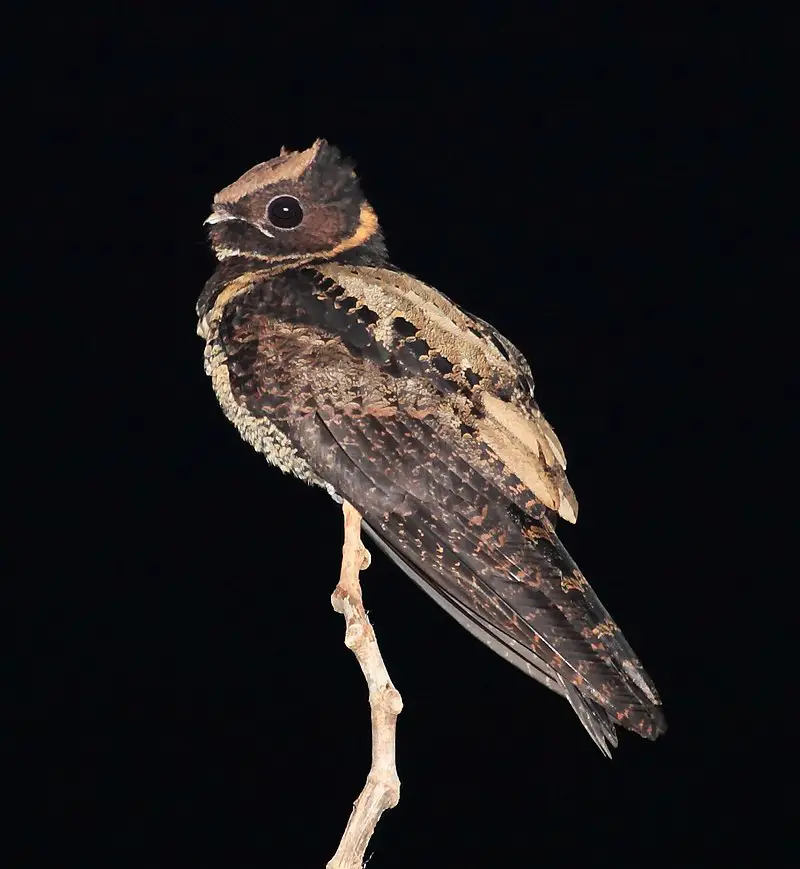
Nightjars are fascinating nocturnal or crepuscular birds belonging to the Caprimulgidae family. These medium-sized birds have long wings, short legs and very small bills.
They can be found across many parts of the world in forests, grasslands and scrubland habitats.
Nightjars feed on insects such as moths, beetles, crickets and cicadas which they catch with their sharp eyesight during night time flights over open fields when hunting for food.
Their scientific name ‘Caprimulgidae’ is derived from an old folktale that claims these birds suck milk from goats.
In reality though, they are harmless creatures who pose no threat to livestock whatsoever.
Nightjars make a variety of different calls ranging from whistles to chirps all throughout the night – adding further mystery to this amazing species.Scientific classification:
| Kingdom | Animalia |
| Phylum | Chordata |
| Class | Aves |
| Clade | Strisores |
| Order | Caprimulgiformes Ridgway, 1881 |
| Family | Caprimulgidae Vigors, 1825 |
45. Sandgrouse
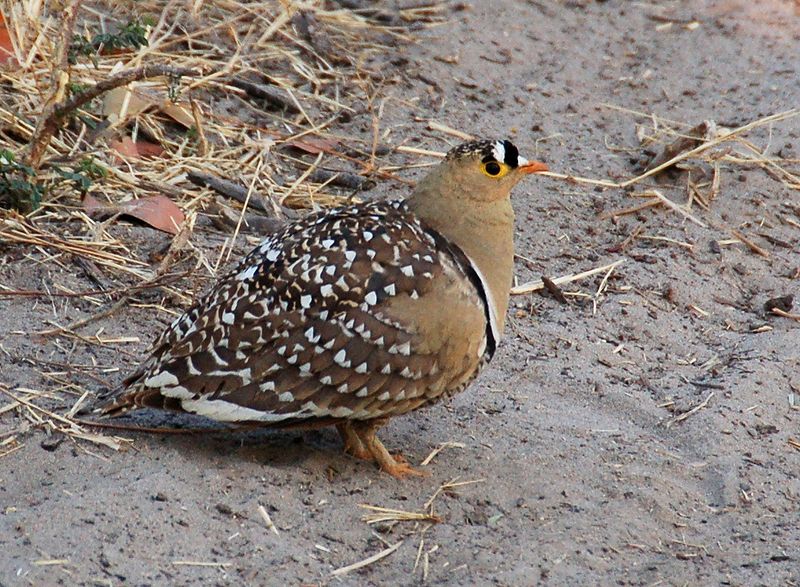
Sandgrouse is birds of the order Pterocliformes, found mainly in Africa and Asia. There are sixteen species belonging to two genera – Syrrhaptes from central Asia and Pterocles from Africa and other Asian countries.
They inhabit treeless areas such as deserts, steppes, scrubland, or savannas and tend to be ground-dwelling birds that feed on seeds.
Sandgrouse has adapted special features for survival in their harsh environment.
They possess well-developed feet with four toes used for walking over hot sand while keeping their body temperature cool at all times by regulating heat loss through their legs.
Their feathers also act like a sponge helping them absorb water before flying long distances back home where they then expel it using specialized glandular secretions located near the wings so that chicks can drink directly from an adult’s breast plumage.Scientific classification:
| Kingdom | Animalia |
| Phylum | Chordata |
| Class | Aves |
| Clade | Columbimorphae |
| Order | Pterocliformes Huxley, 1868 |
| Family | Pteroclidae Bonaparte, 1831 |
46. Threskiornithidae
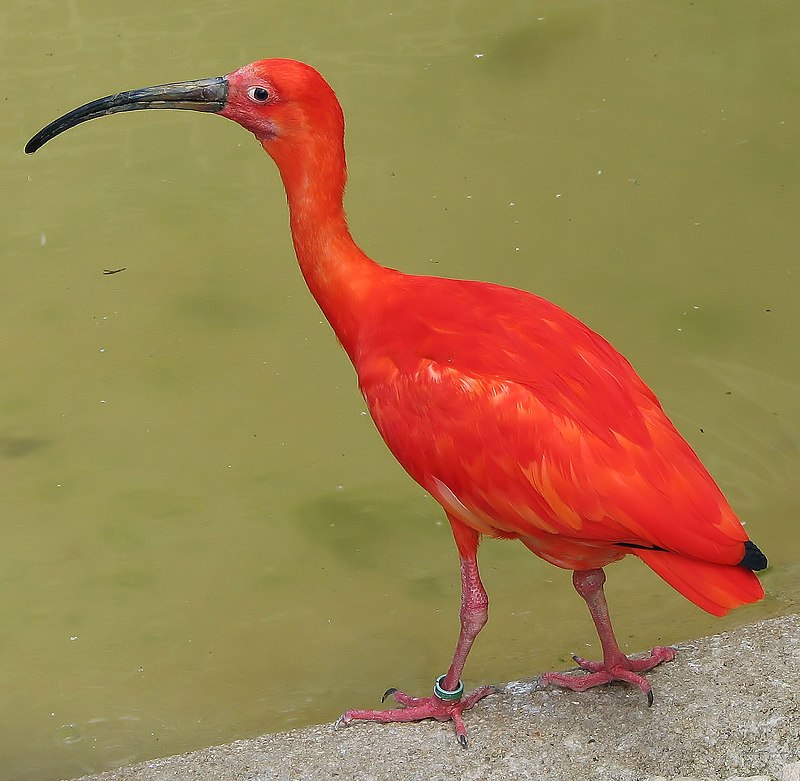
Threskiornithidae is a family of large wading birds which includes 36 species. These birds are traditionally divided into two subfamilies – the ibises and the spoonbills.
However, recent genetic analysis has shown that spoonbills actually belong to Old World ibis group, while New World ibises form an early offshoot from this lineage.
Threskiornithidse members have long curved beaks with serrated edges used for catching fish in shallow water or mudflats, as well as other aquatic invertebrates like crustaceans and mollusks.
They also feed on plant matter such as grains and seeds found close to wetlands areas where they live.
This diverse diet makes them important scavengers in their ecosystems, helping maintain healthy populations of native wildlife by controlling insect numbers and dispersing energy-rich seeds throughout wetland habitats.Scientific classification:
| Kingdom | Animalia |
| Phylum | Chordata |
| Class | Aves |
| Order | Pelecaniformes |
| Suborder | Ardei |
| Family | Threskiornithidae Richmond, 1917 |
47. Falcons And Caracaras
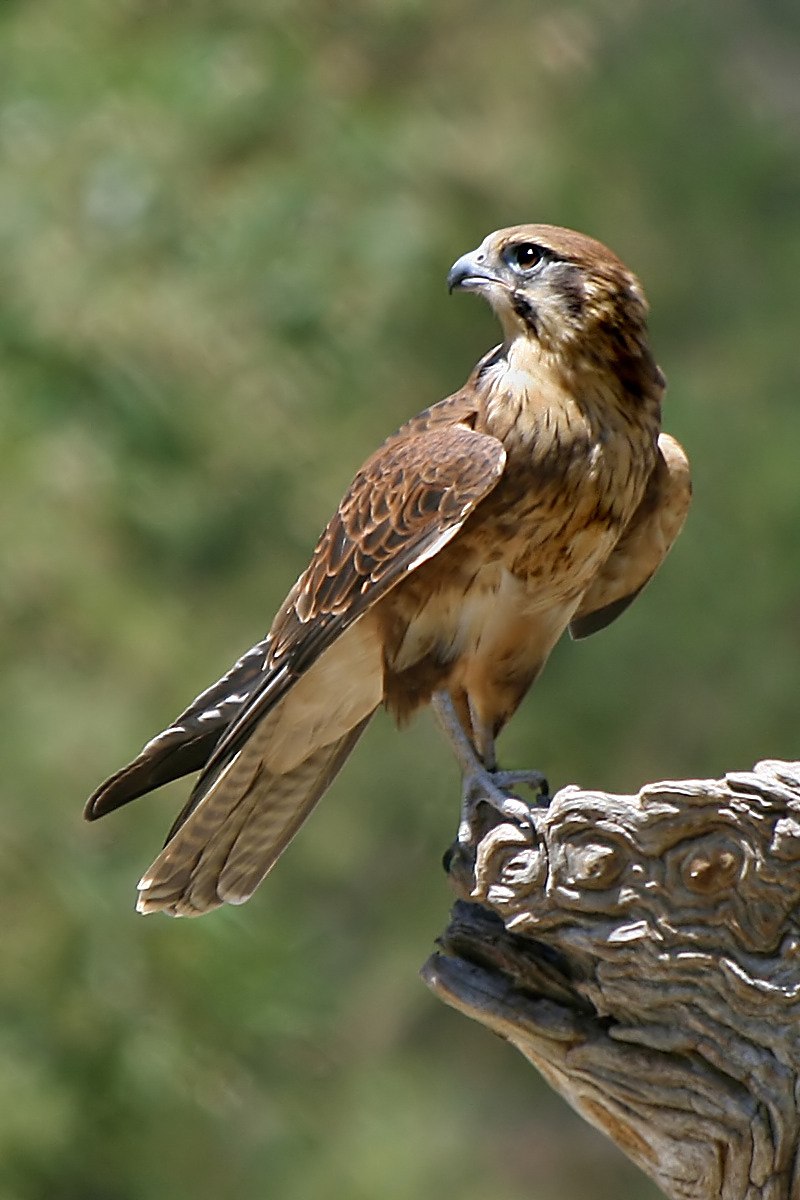
Falcons and caracaras are birds of prey that belong to the family Falconidae. They have impressive sharp talons, hooked beaks and keen eyesight which makes them excellent hunters.
Falcons can reach speeds up to 200 mph when diving for their prey while caracaras use a combination of running and flying to hunt small mammals such as rabbits or rats.
Both falcons and caracaras live in various areas around the world from grasslands, deserts, forests, wetlands or even urban areas where they nest on cliffs or tall buildings.
The diet mainly consists insects but also includes larger animals like reptiles or other birds which they catch by surprise with fast dives out of the sky.Scientific classification:
| Kingdom | Animalia |
| Phylum | Chordata |
| Class | Aves |
| Order | Falconiformes |
| Family | Falconidae Leach, 1820 |
48. Bitterns
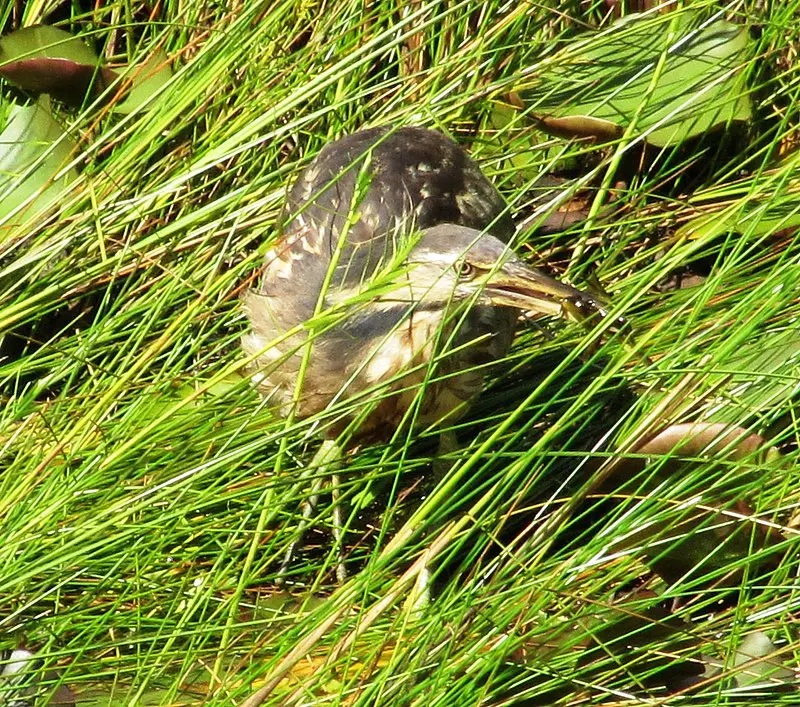
Bitterns are a type of heron, belonging to the Ardeidae family. They have shorter necks and tend to be more secretive than other members of this group.
These birds can usually be found near reed beds or wetlands, where they make their distinctive ‘booming’ call as part of their mating ritual.
Bitterns feed on insects, fish and amphibians which inhabit these areas – catching them with their long pointed bills.
Although bitterns are well camouflaged due to their brown-and-black striped feathers when standing still among reeds, they will fly away quickly if disturbed by humans nearby.Scientific classification:
| Kingdom | Animalia |
| Phylum | Chordata |
| Class | Aves |
| Order | Pelecaniformes |
| Family | Ardeidae |
| Subfamily | Botaurinae Reichenbach, 1850 |
49. Black Redstart
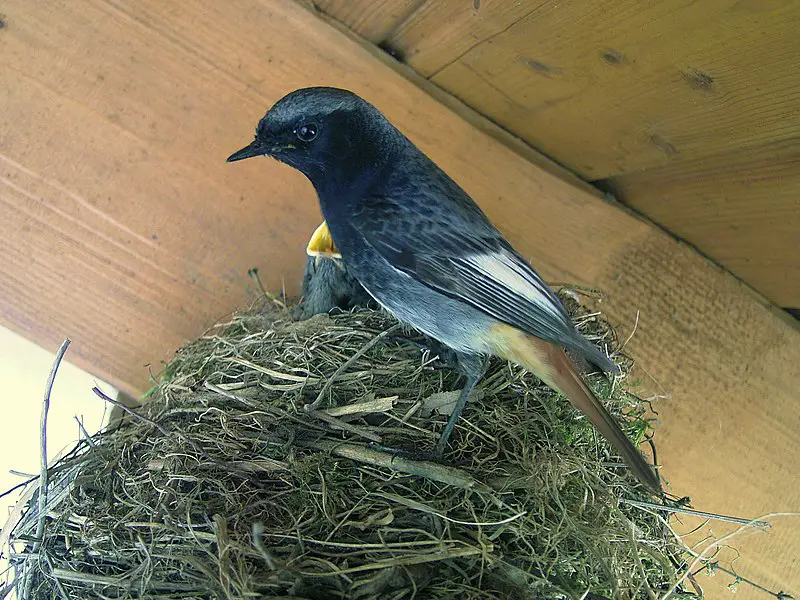
The black redstart is a small passerine bird found in the genus Phoenicurus. It was previously classified as part of the thrush family but now belongs to the Old World flycatcher family.
It has an overall black coloration with striking patches of bright orange or rusty-red on its wings and tail, giving it its name “black redstart”.
The male also sports a prominent crest which he can raise when displaying for females during breeding season.
This species inhabits open woodland areas and generally feeds on insects such as flies, beetles, spiders and caterpillars; although they will supplement their diet with berries where available.
They are often seen perched very prominently from exposed branches near food sources like hedgerows or tree stumps making them easier to spot than some other birds of similar sizeScientific classification:
| Kingdom | Animalia |
| Phylum | Chordata |
| Class | Aves |
| Order | Passeriformes |
| Family | Muscicapidae |
| Genus | Phoenicurus |
| Species | P. ochruros |
50. Black-Necked Grebe

The Black-necked Grebe is a beautiful water bird belonging to the grebe family. It has an ochre coloured plumage with distinctive features which include extending behind its eyes and over its ear coverts.
The upper parts of this species are black, while their underparts and neck are white in colour.
During breeding season, males develop a dark grey crown on top of their head along with bright yellow facial stripes that run from the beak down to it’s chest area.
These birds feed mainly by diving underwater for insects, crustaceans, larvae, molluscs as well as small fish that they find in shallow waters or wetlands near freshwater lakes or streams.
They can often be spotted swimming alone but during winter months gather together creating large flocks due to mating activity taking place at these times.Scientific classification:
| Kingdom | Animalia |
| Phylum | Chordata |
| Class | Aves |
| Order | Podicipediformes |
| Family | Podicipedidae |
| Genus | Podiceps |
| Species | P. nigricollis |